
Peer Recognized
Make a name in academia

How to Write a Research Paper: the LEAP approach (+cheat sheet)
In this article I will show you how to write a research paper using the four LEAP writing steps. The LEAP academic writing approach is a step-by-step method for turning research results into a published paper .
The LEAP writing approach has been the cornerstone of the 70 + research papers that I have authored and the 3700+ citations these paper have accumulated within 9 years since the completion of my PhD. I hope the LEAP approach will help you just as much as it has helped me to make an real, tangible impact with my research.
What is the LEAP research paper writing approach?
I designed the LEAP writing approach not only for merely writing the papers. My goal with the writing system was to show young scientists how to first think about research results and then how to efficiently write each section of the research paper.
In other words, you will see how to write a research paper by first analyzing the results and then building a logical, persuasive arguments. In this way, instead of being afraid of writing research paper, you will be able to rely on the paper writing process to help you with what is the most demanding task in getting published – thinking.
The four research paper writing steps according to the LEAP approach:

I will show each of these steps in detail. And you will be able to download the LEAP cheat sheet for using with every paper you write.
But before I tell you how to efficiently write a research paper, I want to show you what is the problem with the way scientists typically write a research paper and why the LEAP approach is more efficient.
How scientists typically write a research paper (and why it isn’t efficient)
Writing a research paper can be tough, especially for a young scientist. Your reasoning needs to be persuasive and thorough enough to convince readers of your arguments. The description has to be derived from research evidence, from prior art, and from your own judgment. This is a tough feat to accomplish.
The figure below shows the sequence of the different parts of a typical research paper. Depending on the scientific journal, some sections might be merged or nonexistent, but the general outline of a research paper will remain very similar.

Here is the problem: Most people make the mistake of writing in this same sequence.
While the structure of scientific articles is designed to help the reader follow the research, it does little to help the scientist write the paper. This is because the layout of research articles starts with the broad (introduction) and narrows down to the specifics (results). See in the figure below how the research paper is structured in terms of the breath of information that each section entails.
How to write a research paper according to the LEAP approach
For a scientist, it is much easier to start writing a research paper with laying out the facts in the narrow sections (i.e. results), step back to describe them (i.e. write the discussion), and step back again to explain the broader picture in the introduction.
For example, it might feel intimidating to start writing a research paper by explaining your research’s global significance in the introduction, while it is easy to plot the figures in the results. When plotting the results, there is not much room for wiggle: the results are what they are.
Starting to write a research papers from the results is also more fun because you finally get to see and understand the complete picture of the research that you have worked on.
Most importantly, following the LEAP approach will help you first make sense of the results yourself and then clearly communicate them to the readers. That is because the sequence of writing allows you to slowly understand the meaning of the results and then develop arguments for presenting to your readers.
I have personally been able to write and submit a research article in three short days using this method.
Step 1: Lay Out the Facts

You have worked long hours on a research project that has produced results and are no doubt curious to determine what they exactly mean. There is no better way to do this than by preparing figures, graphics and tables. This is what the first LEAP step is focused on – diving into the results.
How to p repare charts and tables for a research paper
Your first task is to try out different ways of visually demonstrating the research results. In many fields, the central items of a journal paper will be charts that are based on the data generated during research. In other fields, these might be conceptual diagrams, microscopy images, schematics and a number of other types of scientific graphics which should visually communicate the research study and its results to the readers. If you have reasonably small number of data points, data tables might be useful as well.
Tips for preparing charts and tables
- Try multiple chart types but in the finished paper only use the one that best conveys the message you want to present to the readers
- Follow the eight chart design progressions for selecting and refining a data chart for your paper: https://peerrecognized.com/chart-progressions
- Prepare scientific graphics and visualizations for your paper using the scientific graphic design cheat sheet: https://peerrecognized.com/tools-for-creating-scientific-illustrations/
How to describe the results of your research
Now that you have your data charts, graphics and tables laid out in front of you – describe what you see in them. Seek to answer the question: What have I found? Your statements should progress in a logical sequence and be backed by the visual information. Since, at this point, you are simply explaining what everyone should be able to see for themselves, you can use a declarative tone: The figure X demonstrates that…
Tips for describing the research results :
- Answer the question: “ What have I found? “
- Use declarative tone since you are simply describing observations
Step 2: Explain the results

The core aspect of your research paper is not actually the results; it is the explanation of their meaning. In the second LEAP step, you will do some heavy lifting by guiding the readers through the results using logic backed by previous scientific research.
How to define the Message of a research paper
To define the central message of your research paper, imagine how you would explain your research to a colleague in 20 seconds . If you succeed in effectively communicating your paper’s message, a reader should be able to recount your findings in a similarly concise way even a year after reading it. This clarity will increase the chances that someone uses the knowledge you generated, which in turn raises the likelihood of citations to your research paper.
Tips for defining the paper’s central message :
- Write the paper’s core message in a single sentence or two bullet points
- Write the core message in the header of the research paper manuscript
How to write the Discussion section of a research paper
In the discussion section you have to demonstrate why your research paper is worthy of publishing. In other words, you must now answer the all-important So what? question . How well you do so will ultimately define the success of your research paper.
Here are three steps to get started with writing the discussion section:
- Write bullet points of the things that convey the central message of the research article (these may evolve into subheadings later on).
- Make a list with the arguments or observations that support each idea.
- Finally, expand on each point to make full sentences and paragraphs.
Tips for writing the discussion section:
- What is the meaning of the results?
- Was the hypothesis confirmed?
- Write bullet points that support the core message
- List logical arguments for each bullet point, group them into sections
- Instead of repeating research timeline, use a presentation sequence that best supports your logic
- Convert arguments to full paragraphs; be confident but do not overhype
- Refer to both supportive and contradicting research papers for maximum credibility
How to write the Conclusions of a research paper
Since some readers might just skim through your research paper and turn directly to the conclusions, it is a good idea to make conclusion a standalone piece. In the first few sentences of the conclusions, briefly summarize the methodology and try to avoid using abbreviations (if you do, explain what they mean).
After this introduction, summarize the findings from the discussion section. Either paragraph style or bullet-point style conclusions can be used. I prefer the bullet-point style because it clearly separates the different conclusions and provides an easy-to-digest overview for the casual browser. It also forces me to be more succinct.
Tips for writing the conclusion section :
- Summarize the key findings, starting with the most important one
- Make conclusions standalone (short summary, avoid abbreviations)
- Add an optional take-home message and suggest future research in the last paragraph
How to refine the Objective of a research paper
The objective is a short, clear statement defining the paper’s research goals. It can be included either in the final paragraph of the introduction, or as a separate subsection after the introduction. Avoid writing long paragraphs with in-depth reasoning, references, and explanation of methodology since these belong in other sections. The paper’s objective can often be written in a single crisp sentence.
Tips for writing the objective section :
- The objective should ask the question that is answered by the central message of the research paper
- The research objective should be clear long before writing a paper. At this point, you are simply refining it to make sure it is addressed in the body of the paper.
How to write the Methodology section of your research paper
When writing the methodology section, aim for a depth of explanation that will allow readers to reproduce the study . This means that if you are using a novel method, you will have to describe it thoroughly. If, on the other hand, you applied a standardized method, or used an approach from another paper, it will be enough to briefly describe it with reference to the detailed original source.
Remember to also detail the research population, mention how you ensured representative sampling, and elaborate on what statistical methods you used to analyze the results.
Tips for writing the methodology section :
- Include enough detail to allow reproducing the research
- Provide references if the methods are known
- Create a methodology flow chart to add clarity
- Describe the research population, sampling methodology, statistical methods for result analysis
- Describe what methodology, test methods, materials, and sample groups were used in the research.
Step 3: Advertize the research
Step 3 of the LEAP writing approach is designed to entice the casual browser into reading your research paper. This advertising can be done with an informative title, an intriguing abstract, as well as a thorough explanation of the underlying need for doing the research within the introduction.

How to write the Introduction of a research paper
The introduction section should leave no doubt in the mind of the reader that what you are doing is important and that this work could push scientific knowledge forward. To do this convincingly, you will need to have a good knowledge of what is state-of-the-art in your field. You also need be able to see the bigger picture in order to demonstrate the potential impacts of your research work.
Think of the introduction as a funnel, going from wide to narrow, as shown in the figure below:
- Start with a brief context to explain what do we already know,
- Follow with the motivation for the research study and explain why should we care about it,
- Explain the research gap you are going to bridge within this research paper,
- Describe the approach you will take to solve the problem.

Tips for writing the introduction section :
- Follow the Context – Motivation – Research gap – Approach funnel for writing the introduction
- Explain how others tried and how you plan to solve the research problem
- Do a thorough literature review before writing the introduction
- Start writing the introduction by using your own words, then add references from the literature
How to prepare the Abstract of a research paper
The abstract acts as your paper’s elevator pitch and is therefore best written only after the main text is finished. In this one short paragraph you must convince someone to take on the time-consuming task of reading your whole research article. So, make the paper easy to read, intriguing, and self-explanatory; avoid jargon and abbreviations.
How to structure the abstract of a research paper:
- The abstract is a single paragraph that follows this structure:
- Problem: why did we research this
- Methodology: typically starts with the words “Here we…” that signal the start of own contribution.
- Results: what we found from the research.
- Conclusions: show why are the findings important
How to compose a research paper Title
The title is the ultimate summary of a research paper. It must therefore entice someone looking for information to click on a link to it and continue reading the article. A title is also used for indexing purposes in scientific databases, so a representative and optimized title will play large role in determining if your research paper appears in search results at all.
Tips for coming up with a research paper title:
- Capture curiosity of potential readers using a clear and descriptive title
- Include broad terms that are often searched
- Add details that uniquely identify the researched subject of your research paper
- Avoid jargon and abbreviations
- Use keywords as title extension (instead of duplicating the words) to increase the chance of appearing in search results
How to prepare Highlights and Graphical Abstract
Highlights are three to five short bullet-point style statements that convey the core findings of the research paper. Notice that the focus is on the findings, not on the process of getting there.
A graphical abstract placed next to the textual abstract visually summarizes the entire research paper in a single, easy-to-follow figure. I show how to create a graphical abstract in my book Research Data Visualization and Scientific Graphics.
Tips for preparing highlights and graphical abstract:
- In highlights show core findings of the research paper (instead of what you did in the study).
- In graphical abstract show take-home message or methodology of the research paper. Learn more about creating a graphical abstract in this article.
Step 4: Prepare for submission

Sometimes it seems that nuclear fusion will stop on the star closest to us (read: the sun will stop to shine) before a submitted manuscript is published in a scientific journal. The publication process routinely takes a long time, and after submitting the manuscript you have very little control over what happens. To increase the chances of a quick publication, you must do your homework before submitting the manuscript. In the fourth LEAP step, you make sure that your research paper is published in the most appropriate journal as quickly and painlessly as possible.
How to select a scientific Journal for your research paper
The best way to find a journal for your research paper is it to review which journals you used while preparing your manuscript. This source listing should provide some assurance that your own research paper, once published, will be among similar articles and, thus, among your field’s trusted sources.

After this initial selection of hand-full of scientific journals, consider the following six parameters for selecting the most appropriate journal for your research paper (read this article to review each step in detail):
- Scope and publishing history
- Ranking and Recognition
- Publishing time
- Acceptance rate
- Content requirements
- Access and Fees
How to select a journal for your research paper:
- Use the six parameters to select the most appropriate scientific journal for your research paper
- Use the following tools for journal selection: https://peerrecognized.com/journals
- Follow the journal’s “Authors guide” formatting requirements
How to Edit you manuscript
No one can write a finished research paper on their first attempt. Before submitting, make sure to take a break from your work for a couple of days, or even weeks. Try not to think about the manuscript during this time. Once it has faded from your memory, it is time to return and edit. The pause will allow you to read the manuscript from a fresh perspective and make edits as necessary.
I have summarized the most useful research paper editing tools in this article.
Tips for editing a research paper:
- Take time away from the research paper to forget about it; then returning to edit,
- Start by editing the content: structure, headings, paragraphs, logic, figures
- Continue by editing the grammar and language; perform a thorough language check using academic writing tools
- Read the entire paper out loud and correct what sounds weird
How to write a compelling Cover Letter for your paper
Begin the cover letter by stating the paper’s title and the type of paper you are submitting (review paper, research paper, short communication). Next, concisely explain why your study was performed, what was done, and what the key findings are. State why the results are important and what impact they might have in the field. Make sure you mention how your approach and findings relate to the scope of the journal in order to show why the article would be of interest to the journal’s readers.
I wrote a separate article that explains what to include in a cover letter here. You can also download a cover letter template from the article.
Tips for writing a cover letter:
- Explain how the findings of your research relate to journal’s scope
- Tell what impact the research results will have
- Show why the research paper will interest the journal’s audience
- Add any legal statements as required in journal’s guide for authors
How to Answer the Reviewers
Reviewers will often ask for new experiments, extended discussion, additional details on the experimental setup, and so forth. In principle, your primary winning tactic will be to agree with the reviewers and follow their suggestions whenever possible. After all, you must earn their blessing in order to get your paper published.
Be sure to answer each review query and stick to the point. In the response to the reviewers document write exactly where in the paper you have made any changes. In the paper itself, highlight the changes using a different color. This way the reviewers are less likely to re-read the entire article and suggest new edits.
In cases when you don’t agree with the reviewers, it makes sense to answer more thoroughly. Reviewers are scientifically minded people and so, with enough logical and supported argument, they will eventually be willing to see things your way.
Tips for answering the reviewers:
- Agree with most review comments, but if you don’t, thoroughly explain why
- Highlight changes in the manuscript
- Do not take the comments personally and cool down before answering
The LEAP research paper writing cheat sheet
Imagine that you are back in grad school and preparing to take an exam on the topic: “How to write a research paper”. As an exemplary student, you would, most naturally, create a cheat sheet summarizing the subject… Well, I did it for you.
This one-page summary of the LEAP research paper writing technique will remind you of the key research paper writing steps. Print it out and stick it to a wall in your office so that you can review it whenever you are writing a new research paper.

Now that we have gone through the four LEAP research paper writing steps, I hope you have a good idea of how to write a research paper. It can be an enjoyable process and once you get the hang of it, the four LEAP writing steps should even help you think about and interpret the research results. This process should enable you to write a well-structured, concise, and compelling research paper.
Have fund with writing your next research paper. I hope it will turn out great!
Learn writing papers that get cited
The LEAP writing approach is a blueprint for writing research papers. But to be efficient and write papers that get cited, you need more than that.
My name is Martins Zaumanis and in my interactive course Research Paper Writing Masterclass I will show you how to visualize your research results, frame a message that convinces your readers, and write each section of the paper. Step-by-step.
And of course – you will learn to respond the infamous Reviewer No.2.

Hey! My name is Martins Zaumanis and I am a materials scientist in Switzerland ( Google Scholar ). As the first person in my family with a PhD, I have first-hand experience of the challenges starting scientists face in academia. With this blog, I want to help young researchers succeed in academia. I call the blog “Peer Recognized”, because peer recognition is what lifts academic careers and pushes science forward.
Besides this blog, I have written the Peer Recognized book series and created the Peer Recognized Academy offering interactive online courses.
Related articles:

One comment
- Pingback: Research Paper Outline with Key Sentence Skeleton (+Paper Template)
Leave a Reply Cancel reply
Your email address will not be published. Required fields are marked *
I want to join the Peer Recognized newsletter!
This site uses Akismet to reduce spam. Learn how your comment data is processed .
Privacy Overview
| Cookie | Duration | Description |
|---|---|---|
| cookielawinfo-checkbox-analytics | 11 months | This cookie is set by GDPR Cookie Consent plugin. The cookie is used to store the user consent for the cookies in the category "Analytics". |
| cookielawinfo-checkbox-functional | 11 months | The cookie is set by GDPR cookie consent to record the user consent for the cookies in the category "Functional". |
| cookielawinfo-checkbox-necessary | 11 months | This cookie is set by GDPR Cookie Consent plugin. The cookies is used to store the user consent for the cookies in the category "Necessary". |
| cookielawinfo-checkbox-others | 11 months | This cookie is set by GDPR Cookie Consent plugin. The cookie is used to store the user consent for the cookies in the category "Other. |
| cookielawinfo-checkbox-performance | 11 months | This cookie is set by GDPR Cookie Consent plugin. The cookie is used to store the user consent for the cookies in the category "Performance". |
| viewed_cookie_policy | 11 months | The cookie is set by the GDPR Cookie Consent plugin and is used to store whether or not user has consented to the use of cookies. It does not store any personal data. |
Copyright © 2024 Martins Zaumanis
Contacts: [email protected]
Privacy Policy
When you choose to publish with PLOS, your research makes an impact. Make your work accessible to all, without restrictions, and accelerate scientific discovery with options like preprints and published peer review that make your work more Open.
- PLOS Biology
- PLOS Climate
- PLOS Complex Systems
- PLOS Computational Biology
- PLOS Digital Health
- PLOS Genetics
- PLOS Global Public Health
- PLOS Medicine
- PLOS Mental Health
- PLOS Neglected Tropical Diseases
- PLOS Pathogens
- PLOS Sustainability and Transformation
- PLOS Collections
Welcome to the PLOS Writing Center
Your source for scientific writing & publishing essentials.
A collection of free, practical guides and hands-on resources for authors looking to improve their scientific publishing skillset.
ARTICLE-WRITING ESSENTIALS
Your title is the first thing anyone who reads your article is going to see, and for many it will be where they stop reading. Learn how to write a title that helps readers find your article, draws your audience in and sets the stage for your research!
The abstract is your chance to let your readers know what they can expect from your article. Learn how to write a clear, and concise abstract that will keep your audience reading.
A clear methods section impacts editorial evaluation and readers’ understanding, and is also the backbone of transparency and replicability. Learn what to include in your methods section, and how much detail is appropriate.
In many fields, a statistical analysis forms the heart of both the methods and results sections of a manuscript. Learn how to report statistical analyses, and what other context is important for publication success and future reproducibility.
The discussion section contains the results and outcomes of a study. An effective discussion informs readers what can be learned from your experiment and provides context for the results.
Ensuring your manuscript is well-written makes it easier for editors, reviewers and readers to understand your work. Avoiding language errors can help accelerate review and minimize delays in the publication of your research.
The PLOS Writing Toolbox
Delivered to your inbox every two weeks, the Writing Toolbox features practical advice and tools you can use to prepare a research manuscript for submission success and build your scientific writing skillset.
Discover how to navigate the peer review and publishing process, beyond writing your article.
The path to publication can be unsettling when you’re unsure what’s happening with your paper. Learn about staple journal workflows to see the detailed steps required for ensuring a rigorous and ethical publication.
Reputable journals screen for ethics at submission—and inability to pass ethics checks is one of the most common reasons for rejection. Unfortunately, once a study has begun, it’s often too late to secure the requisite ethical reviews and clearances. Learn how to prepare for publication success by ensuring your study meets all ethical requirements before work begins.
From preregistration, to preprints, to publication—learn how and when to share your study.
How you store your data matters. Even after you publish your article, your data needs to be accessible and useable for the long term so that other researchers can continue building on your work. Good data management practices make your data discoverable and easy to use, promote a strong foundation for reproducibility and increase your likelihood of citations.
You’ve just spent months completing your study, writing up the results and submitting to your top-choice journal. Now the feedback is in and it’s time to revise. Set out a clear plan for your response to keep yourself on-track and ensure edits don’t fall through the cracks.
There’s a lot to consider when deciding where to submit your work. Learn how to choose a journal that will help your study reach its audience, while reflecting your values as a researcher.
Are you actively preparing a submission for a PLOS journal? Select the relevant journal below for more detailed guidelines.
How to Write an Article
Share the lessons of the Writing Center in a live, interactive training.
Access tried-and-tested training modules, complete with slides and talking points, workshop activities, and more.
Have a language expert improve your writing
Run a free plagiarism check in 10 minutes, generate accurate citations for free.
- Knowledge Base
- Research paper
Checklist: Writing a Great Research Paper
Published on October 16, 2022 by Shona McCombes . Revised on November 29, 2022.
A research paper is an extended piece of writing based on in-depth independent research. It may involve conducting empirical research or analyzing primary and secondary sources .
Writing a good research paper requires you to demonstrate a strong knowledge of your topic and advance an original argument. To convincingly communicate your ideas, you need a logical structure and a clear style that follows the conventions of academic writing .
When you’ve finished writing your paper, use this checklist to evaluate your work.
Instantly correct all language mistakes in your text
Upload your document to correct all your mistakes in minutes

Checklist: Research paper
I have followed all instructions in the assignment sheet.
My introduction presents my topic in an engaging way and provides necessary background information.
My introduction presents a clear, focused research problem and/or thesis statement .
My paper is logically organized using paragraphs and (if relevant) section headings .
Each paragraph is clearly focused on one central idea, expressed in a clear topic sentence .
Each paragraph is relevant to my research problem or thesis statement.
I have used appropriate transitions to clarify the connections between sections, paragraphs, and sentences.
My conclusion provides a concise answer to the research question or emphasizes how the thesis has been supported.
My conclusion shows how my research has contributed to knowledge or understanding of my topic.
My conclusion does not present any new points or information essential to my argument.
I have provided an in-text citation every time I refer to ideas or information from a source.
I have included a reference list at the end of my paper, consistently formatted according to a specific citation style .
I have thoroughly revised my paper and addressed any feedback from my professor or supervisor.
I have followed all formatting guidelines (page numbers, headers, spacing, etc.).
You've written a great paper. Make sure it's perfect with the help of a Scribbr editor!
Cite this Scribbr article
If you want to cite this source, you can copy and paste the citation or click the “Cite this Scribbr article” button to automatically add the citation to our free Citation Generator.
McCombes, S. (2022, November 29). Checklist: Writing a Great Research Paper. Scribbr. Retrieved June 24, 2024, from https://www.scribbr.com/research-paper/research-paper-checklist/
Is this article helpful?
Shona McCombes
Other students also liked, how to create a structured research paper outline | example, writing a research paper introduction | step-by-step guide, research paper format | apa, mla, & chicago templates, what is your plagiarism score.
- Privacy Policy

Home » Research Paper – Structure, Examples and Writing Guide
Research Paper – Structure, Examples and Writing Guide
Table of Contents

Research Paper
Definition:
Research Paper is a written document that presents the author’s original research, analysis, and interpretation of a specific topic or issue.
It is typically based on Empirical Evidence, and may involve qualitative or quantitative research methods, or a combination of both. The purpose of a research paper is to contribute new knowledge or insights to a particular field of study, and to demonstrate the author’s understanding of the existing literature and theories related to the topic.
Structure of Research Paper
The structure of a research paper typically follows a standard format, consisting of several sections that convey specific information about the research study. The following is a detailed explanation of the structure of a research paper:
The title page contains the title of the paper, the name(s) of the author(s), and the affiliation(s) of the author(s). It also includes the date of submission and possibly, the name of the journal or conference where the paper is to be published.
The abstract is a brief summary of the research paper, typically ranging from 100 to 250 words. It should include the research question, the methods used, the key findings, and the implications of the results. The abstract should be written in a concise and clear manner to allow readers to quickly grasp the essence of the research.
Introduction
The introduction section of a research paper provides background information about the research problem, the research question, and the research objectives. It also outlines the significance of the research, the research gap that it aims to fill, and the approach taken to address the research question. Finally, the introduction section ends with a clear statement of the research hypothesis or research question.
Literature Review
The literature review section of a research paper provides an overview of the existing literature on the topic of study. It includes a critical analysis and synthesis of the literature, highlighting the key concepts, themes, and debates. The literature review should also demonstrate the research gap and how the current study seeks to address it.
The methods section of a research paper describes the research design, the sample selection, the data collection and analysis procedures, and the statistical methods used to analyze the data. This section should provide sufficient detail for other researchers to replicate the study.
The results section presents the findings of the research, using tables, graphs, and figures to illustrate the data. The findings should be presented in a clear and concise manner, with reference to the research question and hypothesis.
The discussion section of a research paper interprets the findings and discusses their implications for the research question, the literature review, and the field of study. It should also address the limitations of the study and suggest future research directions.
The conclusion section summarizes the main findings of the study, restates the research question and hypothesis, and provides a final reflection on the significance of the research.
The references section provides a list of all the sources cited in the paper, following a specific citation style such as APA, MLA or Chicago.
How to Write Research Paper
You can write Research Paper by the following guide:
- Choose a Topic: The first step is to select a topic that interests you and is relevant to your field of study. Brainstorm ideas and narrow down to a research question that is specific and researchable.
- Conduct a Literature Review: The literature review helps you identify the gap in the existing research and provides a basis for your research question. It also helps you to develop a theoretical framework and research hypothesis.
- Develop a Thesis Statement : The thesis statement is the main argument of your research paper. It should be clear, concise and specific to your research question.
- Plan your Research: Develop a research plan that outlines the methods, data sources, and data analysis procedures. This will help you to collect and analyze data effectively.
- Collect and Analyze Data: Collect data using various methods such as surveys, interviews, observations, or experiments. Analyze data using statistical tools or other qualitative methods.
- Organize your Paper : Organize your paper into sections such as Introduction, Literature Review, Methods, Results, Discussion, and Conclusion. Ensure that each section is coherent and follows a logical flow.
- Write your Paper : Start by writing the introduction, followed by the literature review, methods, results, discussion, and conclusion. Ensure that your writing is clear, concise, and follows the required formatting and citation styles.
- Edit and Proofread your Paper: Review your paper for grammar and spelling errors, and ensure that it is well-structured and easy to read. Ask someone else to review your paper to get feedback and suggestions for improvement.
- Cite your Sources: Ensure that you properly cite all sources used in your research paper. This is essential for giving credit to the original authors and avoiding plagiarism.
Research Paper Example
Note : The below example research paper is for illustrative purposes only and is not an actual research paper. Actual research papers may have different structures, contents, and formats depending on the field of study, research question, data collection and analysis methods, and other factors. Students should always consult with their professors or supervisors for specific guidelines and expectations for their research papers.
Research Paper Example sample for Students:
Title: The Impact of Social Media on Mental Health among Young Adults
Abstract: This study aims to investigate the impact of social media use on the mental health of young adults. A literature review was conducted to examine the existing research on the topic. A survey was then administered to 200 university students to collect data on their social media use, mental health status, and perceived impact of social media on their mental health. The results showed that social media use is positively associated with depression, anxiety, and stress. The study also found that social comparison, cyberbullying, and FOMO (Fear of Missing Out) are significant predictors of mental health problems among young adults.
Introduction: Social media has become an integral part of modern life, particularly among young adults. While social media has many benefits, including increased communication and social connectivity, it has also been associated with negative outcomes, such as addiction, cyberbullying, and mental health problems. This study aims to investigate the impact of social media use on the mental health of young adults.
Literature Review: The literature review highlights the existing research on the impact of social media use on mental health. The review shows that social media use is associated with depression, anxiety, stress, and other mental health problems. The review also identifies the factors that contribute to the negative impact of social media, including social comparison, cyberbullying, and FOMO.
Methods : A survey was administered to 200 university students to collect data on their social media use, mental health status, and perceived impact of social media on their mental health. The survey included questions on social media use, mental health status (measured using the DASS-21), and perceived impact of social media on their mental health. Data were analyzed using descriptive statistics and regression analysis.
Results : The results showed that social media use is positively associated with depression, anxiety, and stress. The study also found that social comparison, cyberbullying, and FOMO are significant predictors of mental health problems among young adults.
Discussion : The study’s findings suggest that social media use has a negative impact on the mental health of young adults. The study highlights the need for interventions that address the factors contributing to the negative impact of social media, such as social comparison, cyberbullying, and FOMO.
Conclusion : In conclusion, social media use has a significant impact on the mental health of young adults. The study’s findings underscore the need for interventions that promote healthy social media use and address the negative outcomes associated with social media use. Future research can explore the effectiveness of interventions aimed at reducing the negative impact of social media on mental health. Additionally, longitudinal studies can investigate the long-term effects of social media use on mental health.
Limitations : The study has some limitations, including the use of self-report measures and a cross-sectional design. The use of self-report measures may result in biased responses, and a cross-sectional design limits the ability to establish causality.
Implications: The study’s findings have implications for mental health professionals, educators, and policymakers. Mental health professionals can use the findings to develop interventions that address the negative impact of social media use on mental health. Educators can incorporate social media literacy into their curriculum to promote healthy social media use among young adults. Policymakers can use the findings to develop policies that protect young adults from the negative outcomes associated with social media use.
References :
- Twenge, J. M., & Campbell, W. K. (2019). Associations between screen time and lower psychological well-being among children and adolescents: Evidence from a population-based study. Preventive medicine reports, 15, 100918.
- Primack, B. A., Shensa, A., Escobar-Viera, C. G., Barrett, E. L., Sidani, J. E., Colditz, J. B., … & James, A. E. (2017). Use of multiple social media platforms and symptoms of depression and anxiety: A nationally-representative study among US young adults. Computers in Human Behavior, 69, 1-9.
- Van der Meer, T. G., & Verhoeven, J. W. (2017). Social media and its impact on academic performance of students. Journal of Information Technology Education: Research, 16, 383-398.
Appendix : The survey used in this study is provided below.
Social Media and Mental Health Survey
- How often do you use social media per day?
- Less than 30 minutes
- 30 minutes to 1 hour
- 1 to 2 hours
- 2 to 4 hours
- More than 4 hours
- Which social media platforms do you use?
- Others (Please specify)
- How often do you experience the following on social media?
- Social comparison (comparing yourself to others)
- Cyberbullying
- Fear of Missing Out (FOMO)
- Have you ever experienced any of the following mental health problems in the past month?
- Do you think social media use has a positive or negative impact on your mental health?
- Very positive
- Somewhat positive
- Somewhat negative
- Very negative
- In your opinion, which factors contribute to the negative impact of social media on mental health?
- Social comparison
- In your opinion, what interventions could be effective in reducing the negative impact of social media on mental health?
- Education on healthy social media use
- Counseling for mental health problems caused by social media
- Social media detox programs
- Regulation of social media use
Thank you for your participation!
Applications of Research Paper
Research papers have several applications in various fields, including:
- Advancing knowledge: Research papers contribute to the advancement of knowledge by generating new insights, theories, and findings that can inform future research and practice. They help to answer important questions, clarify existing knowledge, and identify areas that require further investigation.
- Informing policy: Research papers can inform policy decisions by providing evidence-based recommendations for policymakers. They can help to identify gaps in current policies, evaluate the effectiveness of interventions, and inform the development of new policies and regulations.
- Improving practice: Research papers can improve practice by providing evidence-based guidance for professionals in various fields, including medicine, education, business, and psychology. They can inform the development of best practices, guidelines, and standards of care that can improve outcomes for individuals and organizations.
- Educating students : Research papers are often used as teaching tools in universities and colleges to educate students about research methods, data analysis, and academic writing. They help students to develop critical thinking skills, research skills, and communication skills that are essential for success in many careers.
- Fostering collaboration: Research papers can foster collaboration among researchers, practitioners, and policymakers by providing a platform for sharing knowledge and ideas. They can facilitate interdisciplinary collaborations and partnerships that can lead to innovative solutions to complex problems.
When to Write Research Paper
Research papers are typically written when a person has completed a research project or when they have conducted a study and have obtained data or findings that they want to share with the academic or professional community. Research papers are usually written in academic settings, such as universities, but they can also be written in professional settings, such as research organizations, government agencies, or private companies.
Here are some common situations where a person might need to write a research paper:
- For academic purposes: Students in universities and colleges are often required to write research papers as part of their coursework, particularly in the social sciences, natural sciences, and humanities. Writing research papers helps students to develop research skills, critical thinking skills, and academic writing skills.
- For publication: Researchers often write research papers to publish their findings in academic journals or to present their work at academic conferences. Publishing research papers is an important way to disseminate research findings to the academic community and to establish oneself as an expert in a particular field.
- To inform policy or practice : Researchers may write research papers to inform policy decisions or to improve practice in various fields. Research findings can be used to inform the development of policies, guidelines, and best practices that can improve outcomes for individuals and organizations.
- To share new insights or ideas: Researchers may write research papers to share new insights or ideas with the academic or professional community. They may present new theories, propose new research methods, or challenge existing paradigms in their field.
Purpose of Research Paper
The purpose of a research paper is to present the results of a study or investigation in a clear, concise, and structured manner. Research papers are written to communicate new knowledge, ideas, or findings to a specific audience, such as researchers, scholars, practitioners, or policymakers. The primary purposes of a research paper are:
- To contribute to the body of knowledge : Research papers aim to add new knowledge or insights to a particular field or discipline. They do this by reporting the results of empirical studies, reviewing and synthesizing existing literature, proposing new theories, or providing new perspectives on a topic.
- To inform or persuade: Research papers are written to inform or persuade the reader about a particular issue, topic, or phenomenon. They present evidence and arguments to support their claims and seek to persuade the reader of the validity of their findings or recommendations.
- To advance the field: Research papers seek to advance the field or discipline by identifying gaps in knowledge, proposing new research questions or approaches, or challenging existing assumptions or paradigms. They aim to contribute to ongoing debates and discussions within a field and to stimulate further research and inquiry.
- To demonstrate research skills: Research papers demonstrate the author’s research skills, including their ability to design and conduct a study, collect and analyze data, and interpret and communicate findings. They also demonstrate the author’s ability to critically evaluate existing literature, synthesize information from multiple sources, and write in a clear and structured manner.
Characteristics of Research Paper
Research papers have several characteristics that distinguish them from other forms of academic or professional writing. Here are some common characteristics of research papers:
- Evidence-based: Research papers are based on empirical evidence, which is collected through rigorous research methods such as experiments, surveys, observations, or interviews. They rely on objective data and facts to support their claims and conclusions.
- Structured and organized: Research papers have a clear and logical structure, with sections such as introduction, literature review, methods, results, discussion, and conclusion. They are organized in a way that helps the reader to follow the argument and understand the findings.
- Formal and objective: Research papers are written in a formal and objective tone, with an emphasis on clarity, precision, and accuracy. They avoid subjective language or personal opinions and instead rely on objective data and analysis to support their arguments.
- Citations and references: Research papers include citations and references to acknowledge the sources of information and ideas used in the paper. They use a specific citation style, such as APA, MLA, or Chicago, to ensure consistency and accuracy.
- Peer-reviewed: Research papers are often peer-reviewed, which means they are evaluated by other experts in the field before they are published. Peer-review ensures that the research is of high quality, meets ethical standards, and contributes to the advancement of knowledge in the field.
- Objective and unbiased: Research papers strive to be objective and unbiased in their presentation of the findings. They avoid personal biases or preconceptions and instead rely on the data and analysis to draw conclusions.
Advantages of Research Paper
Research papers have many advantages, both for the individual researcher and for the broader academic and professional community. Here are some advantages of research papers:
- Contribution to knowledge: Research papers contribute to the body of knowledge in a particular field or discipline. They add new information, insights, and perspectives to existing literature and help advance the understanding of a particular phenomenon or issue.
- Opportunity for intellectual growth: Research papers provide an opportunity for intellectual growth for the researcher. They require critical thinking, problem-solving, and creativity, which can help develop the researcher’s skills and knowledge.
- Career advancement: Research papers can help advance the researcher’s career by demonstrating their expertise and contributions to the field. They can also lead to new research opportunities, collaborations, and funding.
- Academic recognition: Research papers can lead to academic recognition in the form of awards, grants, or invitations to speak at conferences or events. They can also contribute to the researcher’s reputation and standing in the field.
- Impact on policy and practice: Research papers can have a significant impact on policy and practice. They can inform policy decisions, guide practice, and lead to changes in laws, regulations, or procedures.
- Advancement of society: Research papers can contribute to the advancement of society by addressing important issues, identifying solutions to problems, and promoting social justice and equality.
Limitations of Research Paper
Research papers also have some limitations that should be considered when interpreting their findings or implications. Here are some common limitations of research papers:
- Limited generalizability: Research findings may not be generalizable to other populations, settings, or contexts. Studies often use specific samples or conditions that may not reflect the broader population or real-world situations.
- Potential for bias : Research papers may be biased due to factors such as sample selection, measurement errors, or researcher biases. It is important to evaluate the quality of the research design and methods used to ensure that the findings are valid and reliable.
- Ethical concerns: Research papers may raise ethical concerns, such as the use of vulnerable populations or invasive procedures. Researchers must adhere to ethical guidelines and obtain informed consent from participants to ensure that the research is conducted in a responsible and respectful manner.
- Limitations of methodology: Research papers may be limited by the methodology used to collect and analyze data. For example, certain research methods may not capture the complexity or nuance of a particular phenomenon, or may not be appropriate for certain research questions.
- Publication bias: Research papers may be subject to publication bias, where positive or significant findings are more likely to be published than negative or non-significant findings. This can skew the overall findings of a particular area of research.
- Time and resource constraints: Research papers may be limited by time and resource constraints, which can affect the quality and scope of the research. Researchers may not have access to certain data or resources, or may be unable to conduct long-term studies due to practical limitations.
About the author
Muhammad Hassan
Researcher, Academic Writer, Web developer
You may also like

Chapter Summary & Overview – Writing Guide...

Appendix in Research Paper – Examples and...

Data Collection – Methods Types and Examples

Research Paper Title – Writing Guide and Example

Research Gap – Types, Examples and How to...

Research Objectives – Types, Examples and...
Writing a Research Paper
This page lists some of the stages involved in writing a library-based research paper.
Although this list suggests that there is a simple, linear process to writing such a paper, the actual process of writing a research paper is often a messy and recursive one, so please use this outline as a flexible guide.
Discovering, Narrowing, and Focusing a Researchable Topic
- Try to find a topic that truly interests you
- Try writing your way to a topic
- Talk with your course instructor and classmates about your topic
- Pose your topic as a question to be answered or a problem to be solved
Finding, Selecting, and Reading Sources
You will need to look at the following types of sources:
- library catalog, periodical indexes, bibliographies, suggestions from your instructor
- primary vs. secondary sources
- journals, books, other documents
Grouping, Sequencing, and Documenting Information
The following systems will help keep you organized:
- a system for noting sources on bibliography cards
- a system for organizing material according to its relative importance
- a system for taking notes
Writing an Outline and a Prospectus for Yourself
Consider the following questions:
- What is the topic?
- Why is it significant?
- What background material is relevant?
- What is my thesis or purpose statement?
- What organizational plan will best support my purpose?
Writing the Introduction
In the introduction you will need to do the following things:
- present relevant background or contextual material
- define terms or concepts when necessary
- explain the focus of the paper and your specific purpose
- reveal your plan of organization
Writing the Body
- Use your outline and prospectus as flexible guides
- Build your essay around points you want to make (i.e., don’t let your sources organize your paper)
- Integrate your sources into your discussion
- Summarize, analyze, explain, and evaluate published work rather than merely reporting it
- Move up and down the “ladder of abstraction” from generalization to varying levels of detail back to generalization
Writing the Conclusion
- If the argument or point of your paper is complex, you may need to summarize the argument for your reader.
- If prior to your conclusion you have not yet explained the significance of your findings or if you are proceeding inductively, use the end of your paper to add your points up, to explain their significance.
- Move from a detailed to a general level of consideration that returns the topic to the context provided by the introduction.
- Perhaps suggest what about this topic needs further research.
Revising the Final Draft
- Check overall organization : logical flow of introduction, coherence and depth of discussion in body, effectiveness of conclusion.
- Paragraph level concerns : topic sentences, sequence of ideas within paragraphs, use of details to support generalizations, summary sentences where necessary, use of transitions within and between paragraphs.
- Sentence level concerns: sentence structure, word choices, punctuation, spelling.
- Documentation: consistent use of one system, citation of all material not considered common knowledge, appropriate use of endnotes or footnotes, accuracy of list of works cited.

Academic and Professional Writing
This is an accordion element with a series of buttons that open and close related content panels.
Analysis Papers
Reading Poetry
A Short Guide to Close Reading for Literary Analysis
Using Literary Quotations
Play Reviews
Writing a Rhetorical Précis to Analyze Nonfiction Texts
Incorporating Interview Data
Grant Proposals
Planning and Writing a Grant Proposal: The Basics
Additional Resources for Grants and Proposal Writing
Job Materials and Application Essays
Writing Personal Statements for Ph.D. Programs
- Before you begin: useful tips for writing your essay
- Guided brainstorming exercises
- Get more help with your essay
- Frequently Asked Questions
Resume Writing Tips
CV Writing Tips
Cover Letters
Business Letters
Proposals and Dissertations
Resources for Proposal Writers
Resources for Dissertators
Research Papers
Planning and Writing Research Papers
Quoting and Paraphrasing
Writing Annotated Bibliographies
Creating Poster Presentations
Writing an Abstract for Your Research Paper
Thank-You Notes
Advice for Students Writing Thank-You Notes to Donors
Reading for a Review
Critical Reviews
Writing a Review of Literature
Scientific Reports
Scientific Report Format
Sample Lab Assignment
Writing for the Web
Writing an Effective Blog Post
Writing for Social Media: A Guide for Academics
Purdue Online Writing Lab Purdue OWL® College of Liberal Arts
Writing a Research Paper

Welcome to the Purdue OWL
This page is brought to you by the OWL at Purdue University. When printing this page, you must include the entire legal notice.
Copyright ©1995-2018 by The Writing Lab & The OWL at Purdue and Purdue University. All rights reserved. This material may not be published, reproduced, broadcast, rewritten, or redistributed without permission. Use of this site constitutes acceptance of our terms and conditions of fair use.
The Research Paper
There will come a time in most students' careers when they are assigned a research paper. Such an assignment often creates a great deal of unneeded anxiety in the student, which may result in procrastination and a feeling of confusion and inadequacy. This anxiety frequently stems from the fact that many students are unfamiliar and inexperienced with this genre of writing. Never fear—inexperience and unfamiliarity are situations you can change through practice! Writing a research paper is an essential aspect of academics and should not be avoided on account of one's anxiety. In fact, the process of writing a research paper can be one of the more rewarding experiences one may encounter in academics. What is more, many students will continue to do research throughout their careers, which is one of the reasons this topic is so important.
Becoming an experienced researcher and writer in any field or discipline takes a great deal of practice. There are few individuals for whom this process comes naturally. Remember, even the most seasoned academic veterans have had to learn how to write a research paper at some point in their career. Therefore, with diligence, organization, practice, a willingness to learn (and to make mistakes!), and, perhaps most important of all, patience, students will find that they can achieve great things through their research and writing.
The pages in this section cover the following topic areas related to the process of writing a research paper:
- Genre - This section will provide an overview for understanding the difference between an analytical and argumentative research paper.
- Choosing a Topic - This section will guide the student through the process of choosing topics, whether the topic be one that is assigned or one that the student chooses themselves.
- Identifying an Audience - This section will help the student understand the often times confusing topic of audience by offering some basic guidelines for the process.
- Where Do I Begin - This section concludes the handout by offering several links to resources at Purdue, and also provides an overview of the final stages of writing a research paper.
An official website of the United States government
The .gov means it’s official. Federal government websites often end in .gov or .mil. Before sharing sensitive information, make sure you’re on a federal government site.
The site is secure. The https:// ensures that you are connecting to the official website and that any information you provide is encrypted and transmitted securely.
- Publications
- Account settings
Preview improvements coming to the PMC website in October 2024. Learn More or Try it out now .
- Advanced Search
- Journal List
- Prev Chronic Dis
Successful Scientific Writing and Publishing: A Step-by-Step Approach
John k. iskander.
1 Centers for Disease Control and Prevention, Atlanta, Georgia
Sara Beth Wolicki
2 Association of Schools and Programs of Public Health, Washington, District of Columbia
Rebecca T. Leeb
Paul z. siegel.
Scientific writing and publication are essential to advancing knowledge and practice in public health, but prospective authors face substantial challenges. Authors can overcome barriers, such as lack of understanding about scientific writing and the publishing process, with training and resources. The objective of this article is to provide guidance and practical recommendations to help both inexperienced and experienced authors working in public health settings to more efficiently publish the results of their work in the peer-reviewed literature. We include an overview of basic scientific writing principles, a detailed description of the sections of an original research article, and practical recommendations for selecting a journal and responding to peer review comments. The overall approach and strategies presented are intended to contribute to individual career development while also increasing the external validity of published literature and promoting quality public health science.
Introduction
Publishing in the peer-reviewed literature is essential to advancing science and its translation to practice in public health ( 1 , 2 ). The public health workforce is diverse and practices in a variety of settings ( 3 ). For some public health professionals, writing and publishing the results of their work is a requirement. Others, such as program managers, policy makers, or health educators, may see publishing as being outside the scope of their responsibilities ( 4 ).
Disseminating new knowledge via writing and publishing is vital both to authors and to the field of public health ( 5 ). On an individual level, publishing is associated with professional development and career advancement ( 6 ). Publications share new research, results, and methods in a trusted format and advance scientific knowledge and practice ( 1 , 7 ). As more public health professionals are empowered to publish, the science and practice of public health will advance ( 1 ).
Unfortunately, prospective authors face barriers to publishing their work, including navigating the process of scientific writing and publishing, which can be time-consuming and cumbersome. Often, public health professionals lack both training opportunities and understanding of the process ( 8 ). To address these barriers and encourage public health professionals to publish their findings, the senior author (P.Z.S.) and others developed Successful Scientific Writing (SSW), a course about scientific writing and publishing. Over the past 30 years, this course has been taught to thousands of public health professionals, as well as hundreds of students at multiple graduate schools of public health. An unpublished longitudinal survey of course participants indicated that two-thirds agreed that SSW had helped them to publish a scientific manuscript or have a conference abstract accepted. The course content has been translated into this manuscript. The objective of this article is to provide prospective authors with the tools needed to write original research articles of high quality that have a good chance of being published.
Basic Recommendations for Scientific Writing
Prospective authors need to know and tailor their writing to the audience. When writing for scientific journals, 4 fundamental recommendations are: clearly stating the usefulness of the study, formulating a key message, limiting unnecessary words, and using strategic sentence structure.
To demonstrate usefulness, focus on how the study addresses a meaningful gap in current knowledge or understanding. What critical piece of information does the study provide that will help solve an important public health problem? For example, if a particular group of people is at higher risk for a specific condition, but the magnitude of that risk is unknown, a study to quantify the risk could be important for measuring the population’s burden of disease.
Scientific articles should have a clear and concise take-home message. Typically, this is expressed in 1 to 2 sentences that summarize the main point of the paper. This message can be used to focus the presentation of background information, results, and discussion of findings. As an early step in the drafting of an article, we recommend writing out the take-home message and sharing it with co-authors for their review and comment. Authors who know their key point are better able to keep their writing within the scope of the article and present information more succinctly. Once an initial draft of the manuscript is complete, the take-home message can be used to review the content and remove needless words, sentences, or paragraphs.
Concise writing improves the clarity of an article. Including additional words or clauses can divert from the main message and confuse the reader. Additionally, journal articles are typically limited by word count. The most important words and phrases to eliminate are those that do not add meaning, or are duplicative. Often, cutting adjectives or parenthetical statements results in a more concise paper that is also easier to read.
Sentence structure strongly influences the readability and comprehension of journal articles. Twenty to 25 words is a reasonable range for maximum sentence length. Limit the number of clauses per sentence, and place the most important or relevant clause at the end of the sentence ( 9 ). Consider the sentences:
- By using these tips and tricks, an author may write and publish an additional 2 articles a year.
- An author may write and publish an additional 2 articles a year by using these tips and tricks.
The focus of the first sentence is on the impact of using the tips and tricks, that is, 2 more articles published per year. In contrast, the second sentence focuses on the tips and tricks themselves.
Authors should use the active voice whenever possible. Consider the following example:
- Active voice: Authors who use the active voice write more clearly.
- Passive voice: Clarity of writing is promoted by the use of the active voice.
The active voice specifies who is doing the action described in the sentence. Using the active voice improves clarity and understanding, and generally uses fewer words. Scientific writing includes both active and passive voice, but authors should be intentional with their use of either one.
Sections of an Original Research Article
Original research articles make up most of the peer-reviewed literature ( 10 ), follow a standardized format, and are the focus of this article. The 4 main sections are the introduction, methods, results, and discussion, sometimes referred to by the initialism, IMRAD. These 4 sections are referred to as the body of an article. Two additional components of all peer-reviewed articles are the title and the abstract. Each section’s purpose and key components, along with specific recommendations for writing each section, are listed below.
Title. The purpose of a title is twofold: to provide an accurate and informative summary and to attract the target audience. Both prospective readers and database search engines use the title to screen articles for relevance ( 2 ). All titles should clearly state the topic being studied. The topic includes the who, what, when, and where of the study. Along with the topic, select 1 or 2 of the following items to include within the title: methods, results, conclusions, or named data set or study. The items chosen should emphasize what is new and useful about the study. Some sources recommend limiting the title to less than 150 characters ( 2 ). Articles with shorter titles are more frequently cited than articles with longer titles ( 11 ). Several title options are possible for the same study ( Figure ).

Two examples of title options for a single study.
Abstract . The abstract serves 2 key functions. Journals may screen articles for potential publication by using the abstract alone ( 12 ), and readers may use the abstract to decide whether to read further. Therefore, it is critical to produce an accurate and clear abstract that highlights the major purpose of the study, basic procedures, main findings, and principal conclusions ( 12 ). Most abstracts have a word limit and can be either structured following IMRAD, or unstructured. The abstract needs to stand alone from the article and tell the most important parts of the scientific story up front.
Introduction . The purpose of the introduction is to explain how the study sought to create knowledge that is new and useful. The introduction section may often require only 3 paragraphs. First, describe the scope, nature, or magnitude of the problem being addressed. Next, clearly articulate why better understanding this problem is useful, including what is currently known and the limitations of relevant previous studies. Finally, explain what the present study adds to the knowledge base. Explicitly state whether data were collected in a unique way or obtained from a previously unstudied data set or population. Presenting both the usefulness and novelty of the approach taken will prepare the reader for the remaining sections of the article.
Methods . The methods section provides the information necessary to allow others, given the same data, to recreate the analysis. It describes exactly how data relevant to the study purpose were collected, organized, and analyzed. The methods section describes the process of conducting the study — from how the sample was selected to which statistical methods were used to analyze the data. Authors should clearly name, define, and describe each study variable. Some journals allow detailed methods to be included in an appendix or supplementary document. If the analysis involves a commonly used public health data set, such as the Behavioral Risk Factor Surveillance System ( 13 ), general aspects of the data set can be provided to readers by using references. Because what was done is typically more important than who did it, use of the passive voice is often appropriate when describing methods. For example, “The study was a group randomized, controlled trial. A coin was tossed to select an intervention group and a control group.”
Results . The results section describes the main outcomes of the study or analysis but does not interpret the findings or place them in the context of previous research. It is important that the results be logically organized. Suggested organization strategies include presenting results pertaining to the entire population first, and then subgroup analyses, or presenting results according to increasing complexity of analysis, starting with demographic results before proceeding to univariate and multivariate analyses. Authors wishing to draw special attention to novel or unexpected results can present them first.
One strategy for writing the results section is to start by first drafting the figures and tables. Figures, which typically show trends or relationships, and tables, which show specific data points, should each support a main outcome of the study. Identify the figures and tables that best describe the findings and relate to the study’s purpose, and then develop 1 to 2 sentences summarizing each one. Data not relevant to the study purpose may be excluded, summarized briefly in the text, or included in supplemental data sets. When finalizing figures, ensure that axes are labeled and that readers can understand figures without having to refer to accompanying text.
Discussion . In the discussion section, authors interpret the results of their study within the context of both the related literature and the specific scientific gap the study was intended to fill. The discussion does not introduce results that were not presented in the results section. One way authors can focus their discussion is to limit this section to 4 paragraphs: start by reinforcing the study’s take-home message(s), contextualize key results within the relevant literature, state the study limitations, and lastly, make recommendations for further research or policy and practice changes. Authors can support assertions made in the discussion with either their own findings or by referencing related research. By interpreting their own study results and comparing them to others in the literature, authors can emphasize findings that are unique, useful, and relevant. Present study limitations clearly and without apology. Finally, state the implications of the study and provide recommendations or next steps, for example, further research into remaining gaps or changes to practice or policy. Statements or recommendations regarding policy may use the passive voice, especially in instances where the action to be taken is more important than who will implement the action.
Beginning the Writing Process
The process of writing a scientific article occurs before, during, and after conducting the study or analyses. Conducting a literature review is crucial to confirm the existence of the evidence gap that the planned analysis seeks to fill. Because literature searches are often part of applying for research funding or developing a study protocol, the citations used in the grant application or study proposal can also be used in subsequent manuscripts. Full-text databases such as PubMed Central ( 14 ), NIH RePORT ( 15 ), and CDC Stacks ( 16 ) can be useful when performing literature reviews. Authors should familiarize themselves with databases that are accessible through their institution and any assistance that may be available from reference librarians or interlibrary loan systems. Using citation management software is one way to establish and maintain a working reference list. Authors should clearly understand the distinction between primary and secondary references, and ensure that they are knowledgeable about the content of any primary or secondary reference that they cite.
Review of the literature may continue while organizing the material and writing begins. One way to organize material is to create an outline for the paper. Another way is to begin drafting small sections of the article such as the introduction. Starting a preliminary draft forces authors to establish the scope of their analysis and clearly articulate what is new and novel about the study. Furthermore, using information from the study protocol or proposal allows authors to draft the methods and part of the results sections while the study is in progress. Planning potential data comparisons or drafting “table shells” will help to ensure that the study team has collected all the necessary data. Drafting these preliminary sections early during the writing process and seeking feedback from co-authors and colleagues may help authors avoid potential pitfalls, including misunderstandings about study objectives.
The next step is to conduct the study or analyses and use the resulting data to fill in the draft table shells. The initial results will most likely require secondary analyses, that is, exploring the data in ways in addition to those originally planned. Authors should ensure that they regularly update their methods section to describe all changes to data analysis.
After completing table shells, authors should summarize the key finding of each table or figure in a sentence or two. Presenting preliminary results at meetings, conferences, and internal seminars is an established way to solicit feedback. Authors should pay close attention to questions asked by the audience, treating them as an informal opportunity for peer review. On the basis of the questions and feedback received, authors can incorporate revisions and improvements into subsequent drafts of the manuscript.
The relevant literature should be revisited periodically while writing to ensure knowledge of the most recent publications about the manuscript topic. Authors should focus on content and key message during the process of writing the first draft and should not spend too much time on issues of grammar or style. Drafts, or portions of drafts, should be shared frequently with trusted colleagues. Their recommendations should be reviewed and incorporated when they will improve the manuscript’s overall clarity.
For most authors, revising drafts of the manuscript will be the most time-consuming task involved in writing a paper. By regularly checking in with coauthors and colleagues, authors can adopt a systematic approach to rewriting. When the author has completed a draft of the manuscript, he or she should revisit the key take-home message to ensure that it still matches the final data and analysis. At this point, final comments and approval of the manuscript by coauthors can be sought.
Authors should then seek to identify journals most likely to be interested in considering the study for publication. Initial questions to consider when selecting a journal include:
- Which audience is most interested in the paper’s message?
- Would clinicians, public health practitioners, policy makers, scientists, or a broader audience find this useful in their field or practice?
- Do colleagues have prior experience submitting a manuscript to this journal?
- Is the journal indexed and peer-reviewed?
- Is the journal subscription or open-access and are there any processing fees?
- How competitive is the journal?
Authors should seek to balance the desire to be published in a top-tier journal (eg, Journal of the American Medical Association, BMJ, or Lancet) against the statistical likelihood of rejection. Submitting the paper initially to a journal more focused on the paper’s target audience may result in a greater chance of acceptance, as well as more timely dissemination of findings that can be translated into practice. Most of the 50 to 75 manuscripts published each week by authors from the Centers for Disease Control and Prevention (CDC) are published in specialty and subspecialty journals, rather than in top-tier journals ( 17 ).
The target journal’s website will include author guidelines, which will contain specific information about format requirements (eg, font, line spacing, section order, reference style and limit, table and figure formatting), authorship criteria, article types, and word limits for articles and abstracts.
We recommend returning to the previously drafted abstract and ensuring that it complies with the journal’s format and word limit. Authors should also verify that any changes made to the methods or results sections during the article’s drafting are reflected in the final version of the abstract. The abstract should not be written hurriedly just before submitting the manuscript; it is often apparent to editors and reviewers when this has happened. A cover letter to accompany the submission should be drafted; new and useful findings and the key message should be included.
Before submitting the manuscript and cover letter, authors should perform a final check to ensure that their paper complies with all journal requirements. Journals may elect to reject certain submissions on the basis of review of the abstract, or may send them to peer reviewers (typically 2 or 3) for consultation. Occasionally, on the basis of peer reviews, the journal will request only minor changes before accepting the paper for publication. Much more frequently, authors will receive a request to revise and resubmit their manuscript, taking into account peer review comments. Authors should recognize that while revise-and-resubmit requests may state that the manuscript is not acceptable in its current form, this does not constitute a rejection of the article. Authors have several options in responding to peer review comments:
- Performing additional analyses and updating the article appropriately
- Declining to perform additional analyses, but providing an explanation (eg, because the requested analysis goes beyond the scope of the article)
- Providing updated references
- Acknowledging reviewer comments that are simply comments without making changes
In addition to submitting a revised manuscript, authors should include a cover letter in which they list peer reviewer comments, along with the revisions they have made to the manuscript and their reply to the comment. The tone of such letters should be thankful and polite, but authors should make clear areas of disagreement with peer reviewers, and explain why they disagree. During the peer review process, authors should continue to consult with colleagues, especially ones who have more experience with the specific journal or with the peer review process.
There is no secret to successful scientific writing and publishing. By adopting a systematic approach and by regularly seeking feedback from trusted colleagues throughout the study, writing, and article submission process, authors can increase their likelihood of not only publishing original research articles of high quality but also becoming more scientifically productive overall.
Acknowledgments
The authors acknowledge PCD ’s former Associate Editor, Richard A. Goodman, MD, MPH, who, while serving as Editor in Chief of CDC’s Morbidity and Mortality Weekly Report Series, initiated a curriculum on scientific writing for training CDC’s Epidemic Intelligence Service Officers and other CDC public health professionals, and with whom the senior author of this article (P.Z.S.) collaborated in expanding training methods and contents, some of which are contained in this article. The authors acknowledge Juan Carlos Zevallos, MD, for his thoughtful critique and careful editing of previous Successful Scientific Writing materials. We also thank Shira Eisenberg for editorial assistance with the manuscript. This publication was supported by the Cooperative Agreement no. 1U360E000002 from CDC and the Association of Schools and Programs of Public Health. The findings and conclusions of this article do not necessarily represent the official views of CDC or the Association of Schools and Programs of Public Health. Names of journals and citation databases are provided for identification purposes only and do not constitute any endorsement by CDC.
The opinions expressed by authors contributing to this journal do not necessarily reflect the opinions of the U.S. Department of Health and Human Services, the Public Health Service, the Centers for Disease Control and Prevention, or the authors' affiliated institutions.
Suggested citation for this article: Iskander JK, Wolicki SB, Leeb RT, Siegel PZ. Successful Scientific Writing and Publishing: A Step-by-Step Approach. Prev Chronic Dis 2018;15:180085. DOI: https://doi.org/10.5888/pcd15.180085 .
Writing for research
Research preparation is done. the next stage is to start writing "writing for research" is the second stage of your research journey. .
Learn the fundamentals of manuscript preparation and how to write them, including how to structure your article and write a great abstract.
Complete the topics within "Writing for research" and increase your chances of getting published.
Modules in writing for research.

Generative AI in the Publishing Community

Author policies on the use of Generative AI

Generative AI: Q&A

Generative AI: New policies, opportunities, and risks


The why and how of data visualization

Data visualization and choosing the right plot

Three contexts for data visualisation

The evolution of data visualization

From article to art: Creating visual abstracts - Parts 1 & 2: A Guide to Visual Abstracts

From article to art: Creating visual abstracts - Part 3: Designing
From article to art: creating visual abstracts - part 4: sketching the appropriate visual elements.

Structuring your article correctly

Guide to reference managers: How to effectively manage your references
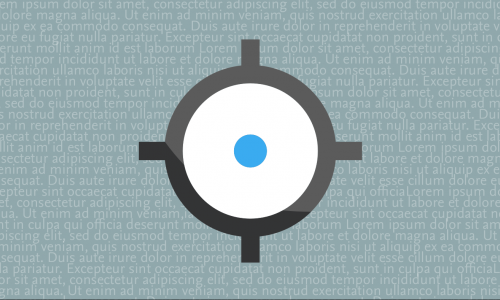
How to prepare your manuscript
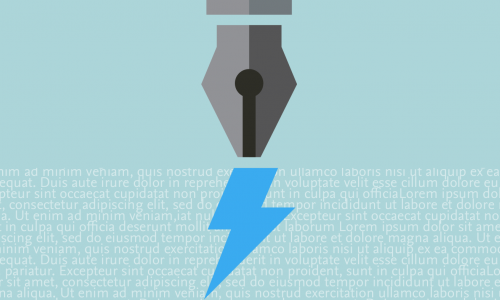
How to write an abstract and improve your article

How to prepare a proposal for a review article
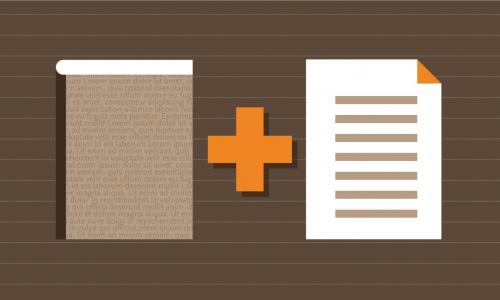
Writing a persuasive cover letter for your manuscript
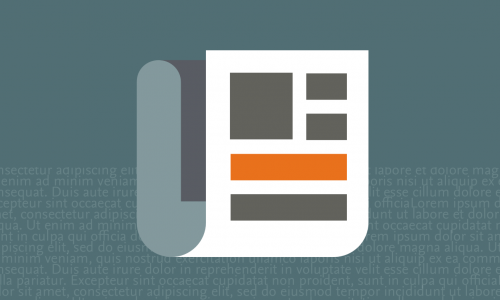
How to turn your thesis into an article

5 Diseases ailing research – and how to cure them
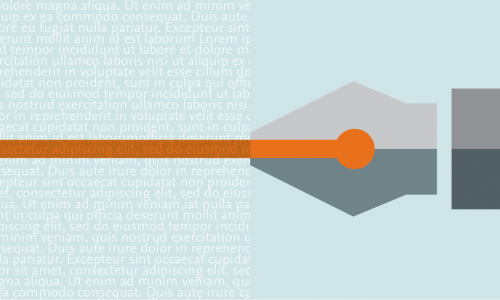
Using proper manuscript language

10 tips for writing a truly terrible journal article
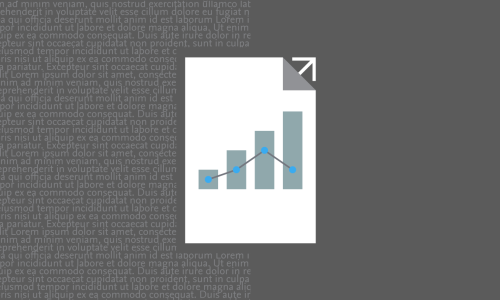
How to write and review a methods article

How to design effective figures for review articles

How to write for an interdisciplinary audience

An editor’s guide to writing a review article

How to write case reports

Systematic reviews 101

Beginners’ guide to writing a manuscript in LaTeX

- Master Your Homework
- Do My Homework
Research Paper and Article: What’s the Difference?
Research Papers and Articles are distinct types of academic writing, but they share many of the same qualities. This article seeks to elucidate the differences between a research paper and an article while also highlighting some common elements shared by both. It will be argued that although there is some overlap between these two forms of scholarly communication, research papers tend to have a more substantial emphasis on data collection and analysis than articles do. In addition, it will be demonstrated how each type has its own unique purpose in terms of disseminating information about particular topics or fields of study. Finally, best practices for utilizing either form for optimal results will be discussed as well as how researchers should go about selecting which one suits their needs best.
1. Introduction to Research Papers and Articles
2. the definition of a research paper, 3. distinguishing characteristics of a research paper, 4. the definition of an article, 5. distinguishing characteristics of an article, 6. understanding the difference between a research paper and an article, 7. conclusion.
What is a Research Paper?
A research paper is an extended written work that presents and supports a thesis, or argument. It delves into the details of existing knowledge on the topic, including both primary sources (directly related to the subject) and secondary sources (related information used as evidence). Research papers often involve analysis from an academic perspective—one backed up with facts, figures, personal opinions, and other forms of supporting material.
What are Research Articles?
Research articles are typically shorter pieces of writing than full-length research papers. They may focus on one specific aspect of the topic or contain some preliminary findings based upon their own original research efforts in order to present new ideas for further study. Unlike lengthy research papers which require extensive background reading before any meaningful conclusions can be drawn from them; many short form articles do not need this level of depth in order to provide interesting insights into a given field.
A research paper is an in-depth academic writing that requires the author to have a thorough knowledge of the subject at hand. It often contains research conducted by a student or group, and it is used to demonstrate their understanding of said topic. In most cases, this type of work will be written with data from primary sources such as interviews or surveys.
Structural Specifications
A research paper has a distinct structure that needs to be respected in order for it to pass the test of scholarly review. This includes having an introduction, body and conclusion sections, all organized logically. Additionally, there should also be headings and subheadings throughout the text. It is crucial that each section clearly states its purpose while also building on any previous points made – ultimately leading up to answering the initial question posed at the beginning of the paper.
Article vs Paper
Understanding the Different Kinds of Written Pieces In order to craft a comprehensive and thoughtful piece of writing, it is essential that one understands the difference between various forms of written pieces. The two main types are research papers and articles, which have distinct features separating them from one another.
- Research paper: A scholarly work typically required for completion of an undergraduate or graduate degree.
- Research article: A document containing original findings in a given field.
The primary difference between these two formats lies in their purpose. Research papers often delve into historical contexts as well as theoretical concepts; they may also serve as repositories for acquired data sets pertaining to current topics or events in academia.
On the other hand, research articles focus primarily on exploring new ideas within disciplines such as science and medicine. They tend to be more concise than longer form works such as dissertations; however, both draw heavily upon factual evidence presented through detailed analysis or empirical experimentation. In this way, each type serves its own unique purpose while providing critical information towards better understanding relevant topics across many subject areas.
While reading any text, it is important to know the distinguishing characteristics of the article. A research paper and a research article are both valuable works that help inform readers about various topics or issues; however, they differ in terms of purpose, structure and audience.
- Research Paper : The primary purpose of this type of work is to explain an issue through detailed analysis from a variety of perspectives. Research papers use long blocks of text which include arguments supported by evidence gathered from sources such as published books or journals. Additionally, they often have footnotes or citations embedded within them.
- Research Article : This type written work usually takes less time than a research paper due its smaller size (e.g., 2000-3000 words). It has clear objectives for writing up results regarding new methods/techniques developed for solving problems related to science/technology etc.; hence uses technical language rather than storytelling style like narrative pieces do.
The research paper and the research article can seem like similar documents, however there are key differences to consider when examining them.
- Research Paper:
Whereas a traditional research paper may explore multiple avenues regarding one particular field or area of study, an article will instead focus solely on one aspect at hand – which could range from discussing current trends surrounding technological advancements to summarizing literature review findings related to behavioral studies conducted over extended periods of time. As such, articles tend to have narrower scopes while papers allow authors greater leeway due to their lengthier formats and higher degree levels associated with them.
Final Reflection The research presented in this paper has revealed that technology can greatly improve the learning experience. Technology-enhanced instruction offers a range of advantages, including improved student engagement and an ability to tailor teaching to individual students’ needs. However, it is important for educators to recognize that there are challenges associated with introducing tech into the classroom. Properly assessing how best to incorporate new technologies requires time and resources from both instructors and institutions alike.
Technology-infused lessons have great potential for enhancing educational outcomes, but only when implemented thoughtfully and deliberately. Educators must take into account factors such as costs associated with implementing or maintaining technological solutions; technical support infrastructure; availability of professional development opportunities; contextual variables specific to their classrooms (e.g., access disparities); content knowledge related to using appropriate tools effectively in different subject areas; alignment between instruction objectives/assessments/technology use; sufficient instructional preparation strategies prior introduction of digital media components across multiple grade levels curriculum standards etc.. This will ensure greater success within the classroom environment via incorporating current technologies alongside traditional approaches found successful over many generations now past.
Overall, technology integration presents tremendous potential for improving teaching practices while also providing students better opportunities for reaching long term academic goals than ever before without utilizing advances available today–allowing them easier paths towards more diverse successes later on in life irrespective one’s location geographically speaking be they close by or further abroad . It remains up still though ultimately upon us all–educators at every level globally whether directly involved presently or seeking those who already working along these lines willing capable going above beyond expected norms from fellow colleagues–as well society entire–to help realize full capabilities modern age holds whenever possible each given chance arises come our way through innovation applied nowadays moving forward continually despite any odds imposed once beforehand against us never fully yielding nor wavering trying no matter what justifiably so deserves future we aim build far brighter much grander scale imaginable arguably could dream create surely intending construct sustaining legacy regardless anyone else’s opinion right wrong even if alone knows why worth taking doing ultimate efforts needed effectuating lasting impacts felt everyone concerned after gone leaving end impressions indelibly marked those remain serve testament integrity conviction carried out job done successfully accordance plan initially laid forth accurately faithfully followed adhere expectations set agreed assured kept fixed focus mind’s eye view foresight completing task moment arrives due date determined arrive consequently utmost importance placed assignments taken seriously ensuring relevant requirements meet met satisfactorily overall satisfactory rating received satisfaction ones entrusting project results depend deliverables supplied highly esteemed pleased finish thank you
In conclusion, it is clear that there are distinct differences between a research paper and an article. Research papers tend to be longer than articles and involve more in-depth analysis of the topic at hand. Articles typically focus on one specific aspect or point while research papers investigate several different perspectives within the given subject matter. Furthermore, both types of writing use evidence from sources to support their arguments but differ in terms of formatting requirements as well as content organization structure. It is important for authors to understand these distinctions when determining which type of written work best suits their needs.

Want to create or adapt books like this? Learn more about how Pressbooks supports open publishing practices.
13.1 Formatting a Research Paper
Learning objectives.
- Identify the major components of a research paper written using American Psychological Association (APA) style.
- Apply general APA style and formatting conventions in a research paper.
In this chapter, you will learn how to use APA style , the documentation and formatting style followed by the American Psychological Association, as well as MLA style , from the Modern Language Association. There are a few major formatting styles used in academic texts, including AMA, Chicago, and Turabian:
- AMA (American Medical Association) for medicine, health, and biological sciences
- APA (American Psychological Association) for education, psychology, and the social sciences
- Chicago—a common style used in everyday publications like magazines, newspapers, and books
- MLA (Modern Language Association) for English, literature, arts, and humanities
- Turabian—another common style designed for its universal application across all subjects and disciplines
While all the formatting and citation styles have their own use and applications, in this chapter we focus our attention on the two styles you are most likely to use in your academic studies: APA and MLA.
If you find that the rules of proper source documentation are difficult to keep straight, you are not alone. Writing a good research paper is, in and of itself, a major intellectual challenge. Having to follow detailed citation and formatting guidelines as well may seem like just one more task to add to an already-too-long list of requirements.
Following these guidelines, however, serves several important purposes. First, it signals to your readers that your paper should be taken seriously as a student’s contribution to a given academic or professional field; it is the literary equivalent of wearing a tailored suit to a job interview. Second, it shows that you respect other people’s work enough to give them proper credit for it. Finally, it helps your reader find additional materials if he or she wishes to learn more about your topic.
Furthermore, producing a letter-perfect APA-style paper need not be burdensome. Yes, it requires careful attention to detail. However, you can simplify the process if you keep these broad guidelines in mind:
- Work ahead whenever you can. Chapter 11 “Writing from Research: What Will I Learn?” includes tips for keeping track of your sources early in the research process, which will save time later on.
- Get it right the first time. Apply APA guidelines as you write, so you will not have much to correct during the editing stage. Again, putting in a little extra time early on can save time later.
- Use the resources available to you. In addition to the guidelines provided in this chapter, you may wish to consult the APA website at http://www.apa.org or the Purdue University Online Writing lab at http://owl.english.purdue.edu , which regularly updates its online style guidelines.
General Formatting Guidelines
This chapter provides detailed guidelines for using the citation and formatting conventions developed by the American Psychological Association, or APA. Writers in disciplines as diverse as astrophysics, biology, psychology, and education follow APA style. The major components of a paper written in APA style are listed in the following box.
These are the major components of an APA-style paper:
Body, which includes the following:
- Headings and, if necessary, subheadings to organize the content
- In-text citations of research sources
- References page
All these components must be saved in one document, not as separate documents.
The title page of your paper includes the following information:
- Title of the paper
- Author’s name
- Name of the institution with which the author is affiliated
- Header at the top of the page with the paper title (in capital letters) and the page number (If the title is lengthy, you may use a shortened form of it in the header.)
List the first three elements in the order given in the previous list, centered about one third of the way down from the top of the page. Use the headers and footers tool of your word-processing program to add the header, with the title text at the left and the page number in the upper-right corner. Your title page should look like the following example.

The next page of your paper provides an abstract , or brief summary of your findings. An abstract does not need to be provided in every paper, but an abstract should be used in papers that include a hypothesis. A good abstract is concise—about one hundred fifty to two hundred fifty words—and is written in an objective, impersonal style. Your writing voice will not be as apparent here as in the body of your paper. When writing the abstract, take a just-the-facts approach, and summarize your research question and your findings in a few sentences.
In Chapter 12 “Writing a Research Paper” , you read a paper written by a student named Jorge, who researched the effectiveness of low-carbohydrate diets. Read Jorge’s abstract. Note how it sums up the major ideas in his paper without going into excessive detail.

Write an abstract summarizing your paper. Briefly introduce the topic, state your findings, and sum up what conclusions you can draw from your research. Use the word count feature of your word-processing program to make sure your abstract does not exceed one hundred fifty words.
Depending on your field of study, you may sometimes write research papers that present extensive primary research, such as your own experiment or survey. In your abstract, summarize your research question and your findings, and briefly indicate how your study relates to prior research in the field.
Margins, Pagination, and Headings
APA style requirements also address specific formatting concerns, such as margins, pagination, and heading styles, within the body of the paper. Review the following APA guidelines.
Use these general guidelines to format the paper:
- Set the top, bottom, and side margins of your paper at 1 inch.
- Use double-spaced text throughout your paper.
- Use a standard font, such as Times New Roman or Arial, in a legible size (10- to 12-point).
- Use continuous pagination throughout the paper, including the title page and the references section. Page numbers appear flush right within your header.
- Section headings and subsection headings within the body of your paper use different types of formatting depending on the level of information you are presenting. Additional details from Jorge’s paper are provided.

Begin formatting the final draft of your paper according to APA guidelines. You may work with an existing document or set up a new document if you choose. Include the following:
- Your title page
- The abstract you created in Note 13.8 “Exercise 1”
- Correct headers and page numbers for your title page and abstract
APA style uses section headings to organize information, making it easy for the reader to follow the writer’s train of thought and to know immediately what major topics are covered. Depending on the length and complexity of the paper, its major sections may also be divided into subsections, sub-subsections, and so on. These smaller sections, in turn, use different heading styles to indicate different levels of information. In essence, you are using headings to create a hierarchy of information.
The following heading styles used in APA formatting are listed in order of greatest to least importance:
- Section headings use centered, boldface type. Headings use title case, with important words in the heading capitalized.
- Subsection headings use left-aligned, boldface type. Headings use title case.
- The third level uses left-aligned, indented, boldface type. Headings use a capital letter only for the first word, and they end in a period.
- The fourth level follows the same style used for the previous level, but the headings are boldfaced and italicized.
- The fifth level follows the same style used for the previous level, but the headings are italicized and not boldfaced.
Visually, the hierarchy of information is organized as indicated in Table 13.1 “Section Headings” .
Table 13.1 Section Headings
| Level of Information | Text Example |
|---|---|
| Level 1 | |
| Level 2 | |
| Level 3 | |
| Level 4 | |
| Level 5 |
A college research paper may not use all the heading levels shown in Table 13.1 “Section Headings” , but you are likely to encounter them in academic journal articles that use APA style. For a brief paper, you may find that level 1 headings suffice. Longer or more complex papers may need level 2 headings or other lower-level headings to organize information clearly. Use your outline to craft your major section headings and determine whether any subtopics are substantial enough to require additional levels of headings.
Working with the document you developed in Note 13.11 “Exercise 2” , begin setting up the heading structure of the final draft of your research paper according to APA guidelines. Include your title and at least two to three major section headings, and follow the formatting guidelines provided above. If your major sections should be broken into subsections, add those headings as well. Use your outline to help you.
Because Jorge used only level 1 headings, his Exercise 3 would look like the following:
| Level of Information | Text Example |
|---|---|
| Level 1 | |
| Level 1 | |
| Level 1 | |
| Level 1 |
Citation Guidelines
In-text citations.
Throughout the body of your paper, include a citation whenever you quote or paraphrase material from your research sources. As you learned in Chapter 11 “Writing from Research: What Will I Learn?” , the purpose of citations is twofold: to give credit to others for their ideas and to allow your reader to follow up and learn more about the topic if desired. Your in-text citations provide basic information about your source; each source you cite will have a longer entry in the references section that provides more detailed information.
In-text citations must provide the name of the author or authors and the year the source was published. (When a given source does not list an individual author, you may provide the source title or the name of the organization that published the material instead.) When directly quoting a source, it is also required that you include the page number where the quote appears in your citation.
This information may be included within the sentence or in a parenthetical reference at the end of the sentence, as in these examples.
Epstein (2010) points out that “junk food cannot be considered addictive in the same way that we think of psychoactive drugs as addictive” (p. 137).
Here, the writer names the source author when introducing the quote and provides the publication date in parentheses after the author’s name. The page number appears in parentheses after the closing quotation marks and before the period that ends the sentence.
Addiction researchers caution that “junk food cannot be considered addictive in the same way that we think of psychoactive drugs as addictive” (Epstein, 2010, p. 137).
Here, the writer provides a parenthetical citation at the end of the sentence that includes the author’s name, the year of publication, and the page number separated by commas. Again, the parenthetical citation is placed after the closing quotation marks and before the period at the end of the sentence.
As noted in the book Junk Food, Junk Science (Epstein, 2010, p. 137), “junk food cannot be considered addictive in the same way that we think of psychoactive drugs as addictive.”
Here, the writer chose to mention the source title in the sentence (an optional piece of information to include) and followed the title with a parenthetical citation. Note that the parenthetical citation is placed before the comma that signals the end of the introductory phrase.
David Epstein’s book Junk Food, Junk Science (2010) pointed out that “junk food cannot be considered addictive in the same way that we think of psychoactive drugs as addictive” (p. 137).
Another variation is to introduce the author and the source title in your sentence and include the publication date and page number in parentheses within the sentence or at the end of the sentence. As long as you have included the essential information, you can choose the option that works best for that particular sentence and source.
Citing a book with a single author is usually a straightforward task. Of course, your research may require that you cite many other types of sources, such as books or articles with more than one author or sources with no individual author listed. You may also need to cite sources available in both print and online and nonprint sources, such as websites and personal interviews. Chapter 13 “APA and MLA Documentation and Formatting” , Section 13.2 “Citing and Referencing Techniques” and Section 13.3 “Creating a References Section” provide extensive guidelines for citing a variety of source types.
Writing at Work
APA is just one of several different styles with its own guidelines for documentation, formatting, and language usage. Depending on your field of interest, you may be exposed to additional styles, such as the following:
- MLA style. Determined by the Modern Languages Association and used for papers in literature, languages, and other disciplines in the humanities.
- Chicago style. Outlined in the Chicago Manual of Style and sometimes used for papers in the humanities and the sciences; many professional organizations use this style for publications as well.
- Associated Press (AP) style. Used by professional journalists.
References List
The brief citations included in the body of your paper correspond to the more detailed citations provided at the end of the paper in the references section. In-text citations provide basic information—the author’s name, the publication date, and the page number if necessary—while the references section provides more extensive bibliographical information. Again, this information allows your reader to follow up on the sources you cited and do additional reading about the topic if desired.
The specific format of entries in the list of references varies slightly for different source types, but the entries generally include the following information:
- The name(s) of the author(s) or institution that wrote the source
- The year of publication and, where applicable, the exact date of publication
- The full title of the source
- For books, the city of publication
- For articles or essays, the name of the periodical or book in which the article or essay appears
- For magazine and journal articles, the volume number, issue number, and pages where the article appears
- For sources on the web, the URL where the source is located
The references page is double spaced and lists entries in alphabetical order by the author’s last name. If an entry continues for more than one line, the second line and each subsequent line are indented five spaces. Review the following example. ( Chapter 13 “APA and MLA Documentation and Formatting” , Section 13.3 “Creating a References Section” provides extensive guidelines for formatting reference entries for different types of sources.)

In APA style, book and article titles are formatted in sentence case, not title case. Sentence case means that only the first word is capitalized, along with any proper nouns.
Key Takeaways
- Following proper citation and formatting guidelines helps writers ensure that their work will be taken seriously, give proper credit to other authors for their work, and provide valuable information to readers.
- Working ahead and taking care to cite sources correctly the first time are ways writers can save time during the editing stage of writing a research paper.
- APA papers usually include an abstract that concisely summarizes the paper.
- APA papers use a specific headings structure to provide a clear hierarchy of information.
- In APA papers, in-text citations usually include the name(s) of the author(s) and the year of publication.
- In-text citations correspond to entries in the references section, which provide detailed bibliographical information about a source.
Writing for Success Copyright © 2015 by University of Minnesota is licensed under a Creative Commons Attribution-NonCommercial-ShareAlike 4.0 International License , except where otherwise noted.
- +91 8287801801
- [email protected]
Research Paper | Book Publication | Collaborations | Patent

- Research Paper
- Book Publication
- Collaboration
- SCIE, SSCI, ESCI, and AHCI

How to Write a Research Article: A Comprehensive Guide
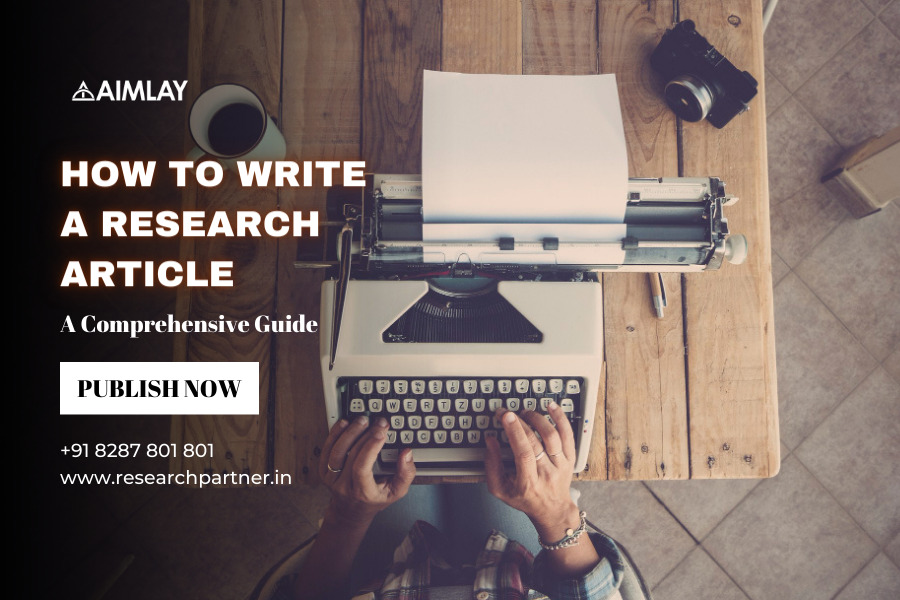
Writing a Research Article can be an unbelievably daunting task, but it is a vital skill for any researcher or academic. This blog post intends to provide a detailed instruction on how to create a Research Paper. It will delve into the crucial elements of a Research Article, including its format, various types, and how it differs from a Research Paper. By following the steps provided, you will get vital insights on how to write a well-structured and successful research piece. Whether you are a student, researcher, or professional writer, this article will help you understand the key components required to produce a high-quality Research article.
Table of Content
What is a research article .
A Research Article is a written document that represents the findings of original and authentic research. It is typically published in a peer-reviewed academic journal and is used to communicate new knowledge and ideas to the research community. Research Articles are often used as a basis for further research and are an essential part of scientific discourse.
Components of a Research Article
A Research Article typically consists of the following components:
- Abstract – A summary of the research article, including the research question, methodology, results, and conclusion.
- Introduction – This is an explanation of the purpose behind conducting the study, and a summary of the methodology adopted for the research. This section serves as the foundation of the research article and provides the reader with a contextual background for understanding the study’s objectives and methodology. It basically outlines the reason for conducting the research and provides a glimpse of the approach that will be used to answer the research question.
- Literature Review – This section entails a comprehensive examination of the relevant literature that offers a framework for the research question and presents the existing knowledge on the subject.
- Methodology – This section explains the study’s research design, data gathering, and analysis methods.
- Results – A description of the findings of the research.
- Discussion – An interpretation of the results, including their significance and implications, as well as a discussion of the limitations of the study.
- Conclusion – A summary of the research findings, their implications, and recommendations for future research.
Research Article Format
A Research Article typically follows a standard format including:
- Title : A clear and concise title that accurately reflects the research question.
- Authors : A list of authors who contributed to the research.
- Affiliations : The institutions or organizations that the authors are affiliated with.
- Abstract : A summary of the research article.
- Keywords : A list of keywords that describe the research topic.
- Introduction : A fine background of the research question and a complete overview of the methodology used.
- Literature Review : A review of the relevant literature.
- Methodology : A description of the research design, data collection, and analysis methods used.
- Results : A description of the findings of the research.
- Discussion : An interpretation of the results and their implications, as well as a discussion of the limitations of the study.
- Conclusion: A summary of the research findings and recommendations for future research.
Types of Research Articles
There are several types of research articles including:
- Original Research Articles : These are articles that report on original research.
- Review articles : These are articles that summarize and synthesize the findings of existing research.
- Case studies : These are articles that describe and analyze a specific case or cases.
- Short communications : These are brief articles that report on original research.
Research Article vs Research Paper
While research articles and Research Papers are often used interchangeably, there are some differences between the two. A research article is typically a formal, peer-reviewed document that presents the findings of original research. A research paper, on the other hand, is a broader term that can refer to any written work that presents the findings of research, including essays, reports, and dissertations.
Example of a Research Article
Here is an example of a research article :
- Title: The effects of exercise on mental health in older adults.
- Abstract : This study investigated the effects of exercise on mental health in older adults. A sample of 100 participants aged 65 and over were randomly assigned to an exercise or control group. The exercise group participated in a 12-week exercise program, while the control group received no intervention. The results showed that the exercise group had significantly lower levels of depression and anxiety compared to the control group. Additionally, the exercise group reported higher levels of well-being and satisfaction with life. These findings suggest that exercise can be an effective intervention for improving mental health in older adults.
- Introduction: Mental health issues such as depression and anxiety are common among older adults and can have a significant impact on quality of life. Exercise has been shown to have numerous physical health benefits, but its effects on mental health in older adults are less clear. This study aimed to investigate the effects of exercise on mental health outcomes in older adults.
- Literature Review: Previous research has suggested that exercise can improve mental health outcomes in older adults. For example, a study by Mather et al. (2016) found that a 12-week exercise program resulted in significant improvements in depression and anxiety in a sample of older adults. Similarly, a meta-analysis by Smith et al. (2018) found that exercise interventions were associated with improvements in various mental health outcomes, including depression and anxiety, in older adults.
- Methodology: A total of 100 participants aged 65 and over were recruited from a community centre and randomly assigned to an exercise or control group. The exercise group participated in a 12-week exercise program consisting of three 60-minute sessions per week. The program included a combination of aerobic and resistance exercises. The control group received no intervention. Both groups completed measures of depression, anxiety, well-being, and satisfaction with life at baseline and at the end of the 12-week period.
- Results: The results showed that the exercise group had significantly lower levels of depression and anxiety compared to the control group at the end of the 12-week period. Additionally, the exercise group reported higher levels of well-being and satisfaction with life. There were no significant differences between the groups in terms of physical health outcomes.
- Discussion: These findings provide support for the use of exercise as an intervention for improving mental health outcomes in older adults. The results suggest that a 12-week exercise program can lead to significant reductions in depression and anxiety, and improvements in well-being and satisfaction with life. It is important to note, however, that the study had some limitations, including a relatively small sample size and a lack of long-term follow-up. Further research is needed to confirm these findings and explore the potential mechanisms underlying the effects of exercise on mental health in older adults.
This study provides evidence that exercise can be an effective intervention for improving mental health outcomes in older adults. Given the high prevalence of mental health issues in this population, exercise programs may be an important tool for promoting well-being and improving quality of life. Further research is needed to determine the optimal duration, intensity, and type of exercise for improving mental health outcomes in older adults.
Share this Article
Send your query, leave a comment cancel reply.
Your email address will not be published. Required fields are marked *
Save my name, email, and website in this browser for the next time I comment.
"Can't find your paper? Let us help! Fill out our form and get one step closer to success."
Related tags, related blogs.

UGC Care List of Journals 2024: Unlocking Academic Excellence
Table of Content Introduction Understanding the UGC CARE Initiative Objectives of UGC CARE Importance of the UGC CARE List Navigating the UGC CARE List Benefits

Elevate Your Research: The Power of Publishing in Scopus Indexed Journals
In the research and academic sector, publishing is a crucial element considered for professional development in reputable journals. Among the various structures and journals available,

Book Publication: Strategies for a Successful Book
Book Publication is a tremendous success, but making sure it’s fulfilling inside the marketplace requires strategic advertising and marketing strategies. With countless books launched every

The Future of Research Publishing: Insights on UGC Care Journals 2024
Table Of Content Intoduction The History of Research Publishing The Role of UGC CARE Journals Use Of A.I & Machine Learning Strengthening Ethical Guidelines Training
Journal Categories

Aimlay is a top-notch Educational and Writing service platform for the last 13 years. Our team of experienced professionals is dedicated to providing you with the highest quality services to ensure that your work is published in reputable national and international indexed journals, and other scholarly works.
Quick links, useful links, blog categories.
- +91 8287 801 801
- 412, Fourth Floor, D Mall, Bhagwan Mahavir Marg, Swarn Jayanti Park, Sector 10, Rohini, Delhi, 110085
Copyright © 2024 AIMLAY
Different types of research articles
A guide for early career researchers.
In scholarly literature, there are many different kinds of articles published every year. Original research articles are often the first thing you think of when you hear the words ‘journal article’. In reality, research work often results in a whole mixture of different outputs and it’s not just the final research article that can be published.
Finding a home to publish supporting work in different formats can help you start publishing sooner, allowing you to build your publication record and research profile.
But before you do, it’s very important that you check the instructions for authors and the aims and scope of the journal(s) you’d like to submit to. These will tell you whether they accept the type of article you’re thinking of writing and what requirements they have around it.
Understanding the different kind of articles
There’s a huge variety of different types of articles – some unique to individual journals – so it’s important to explore your options carefully. While it would be impossible to cover every single article type here, below you’ll find a guide to the most common research articles and outputs you could consider submitting for publication.
Book review
Many academic journals publish book reviews, which aim to provide insight and opinion on recently published scholarly books. Writing book reviews is often a good way to begin academic writing. It can help you get your name known in your field and give you valuable experience of publishing before you write a full-length article.
If you’re keen to write a book review, a good place to start is looking for journals that publish or advertise the books they have available for review. Then it’s just a matter of putting yourself forward for one of them.
You can check whether a journal publishes book reviews by browsing previous issues or by seeing if a book review editor is listed on the editorial board. In addition, some journals publish other types of reviews, such as film, product, or exhibition reviews, so it’s worth bearing those in mind as options as well.
Get familiar with instructions for authors
Be prepared, speed up your submission, and make sure nothing is forgotten by understanding a journal’s individual requirements.
Publishing tips, direct to your inbox
Expert tips and guidance on getting published and maximizing the impact of your research. Register now for weekly insights direct to your inbox.

Case report
A medical case report – also sometimes called a clinical case study – is an original short report that provides details of a single patient case.
Case reports include detailed information on the symptoms, signs, diagnosis, treatment, and follow-up of an individual patient. They remain one of the cornerstones of medical progress and provide many new ideas in medicine.
Depending on the journal, a case report doesn’t necessarily need to describe an especially novel or unusual case as there is benefit from collecting details of many standard cases.
Take a look at F1000Research’s guidance on case reports , to understand more about what’s required in them. And don’t forget that for all studies involving human participants, informed written consent to take part in the research must be obtained from the participants – find out more about consent to publish.
Clinical study
In medicine, a clinical study report is a type of article that provides in-depth detail on the methods and results of a clinical trial. They’re typically similar in length and format to original research articles.
Most journals now require that you register protocols for clinical trials you’re involved with in a publicly accessible registry. A list of eligible registries can be found on the WHO International Clinical Trials Registry Platform (ICTRP) . Trials can also be registered at clinicaltrials.gov or the EU Clinical Trials Register . Once registered, your trial will be assigned a clinical trial number (CTN).
Before you submit a clinical study, you’ll need to include clinical trial numbers and registration dates in the manuscript, usually in the abstract and methods sections.
Commentaries and letters to editors
Letters to editors, as well as ‘replies’ and ‘discussions’, are usually brief comments on topical issues of public and political interest (related to the research field of the journal), anecdotal material, or readers’ reactions to material published in the journal.
Commentaries are similar, though they may be slightly more in-depth, responding to articles recently published in the journal. There may be a ‘target article’ which various commentators are invited to respond to.
You’ll need to look through previous issues of any journal you’re interested in writing for and review the instructions for authors to see which types of these articles (if any) they accept.

Conference materials
Many of our medical journals accept conference material supplements. These are open access peer-reviewed, permanent, and citable publications within the journal. Conference material supplements record research around a common thread, as presented at a workshop, congress, or conference, for the scientific record. They can include the following types of articles:
Poster extracts
Conference abstracts
Presentation extracts
Find out more about submitting conference materials.
Data notes are a short peer-reviewed article type that concisely describe research data stored in a repository. Publishing a data note can help you to maximize the impact of your data and gain appropriate credit for your research.

Data notes promote the potential reuse of research data and include details of why and how the data were created. They do not include any analysis but they can be linked to a research article incorporating analysis of the published dataset, as well as the results and conclusions.
F1000Research enables you to publish your data note rapidly and openly via an author-centric platform. There is also a growing range of options for publishing data notes in Taylor & Francis journals, including in All Life and Big Earth Data .
Read our guide to data notes to find out more.
Letters or short reports
Letters or short reports (sometimes known as brief communications or rapid communications) are brief reports of data from original research.
Editors publish these reports where they believe the data will be interesting to many researchers and could stimulate further research in the field. There are even entire journals dedicated to publishing letters.
As they’re relatively short, the format is useful for researchers with results that are time sensitive (for example, those in highly competitive or quickly-changing disciplines). This format often has strict length limits, so some experimental details may not be published until the authors write a full original research article.
Brief reports (previously called Research Notes) are a type of short report published by F1000Research – part of the Taylor & Francis Group. To find out more about the requirements for a brief report, take a look at F1000Research’s guidance .

Method article
A method article is a medium length peer-reviewed, research-focused article type that aims to answer a specific question. It also describes an advancement or development of current methodological approaches and research procedures (akin to a research article), following the standard layout for research articles. This includes new study methods, substantive modifications to existing methods, or innovative applications of existing methods to new models or scientific questions. These should include adequate and appropriate validation to be considered, and any datasets associated with the paper must publish all experimental controls and make full datasets available.
Posters and slides
With F1000Research, you can publish scholarly posters and slides covering basic scientific, translational, and clinical research within the life sciences and medicine. You can find out more about how to publish posters and slides on the F1000Research website .
Registered report
A Registered Report consists of two different kinds of articles: a study protocol and an original research article.
This is because the review process for Registered Reports is divided into two stages. In Stage 1, reviewers assess study protocols before data is collected. In Stage 2, reviewers consider the full published study as an original research article, including results and interpretation.
Taking this approach, you can get an in-principle acceptance of your research article before you start collecting data. We’ve got further guidance on Registered Reports here , and you can also read F1000Research’s guidance on preparing a Registered Report .
Research article
Original research articles are the most common type of journal article. They’re detailed studies reporting new work and are classified as primary literature.
You may find them referred to as original articles, research articles, research, or even just articles, depending on the journal.
Typically, especially in STEM subjects, these articles will include Abstract, Introduction, Methods, Results, Discussion, and Conclusion sections. However, you should always check the instructions for authors of your chosen journal to see whether it specifies how your article should be structured. If you’re planning to write an original research article, take a look at our guidance on writing a journal article .

Review article
Review articles provide critical and constructive analysis of existing published literature in a field. They’re usually structured to provide a summary of existing literature, analysis, and comparison. Often, they identify specific gaps or problems and provide recommendations for future research.
Unlike original research articles, review articles are considered as secondary literature. This means that they generally don’t present new data from the author’s experimental work, but instead provide analysis or interpretation of a body of primary research on a specific topic. Secondary literature is an important part of the academic ecosystem because it can help explain new or different positions and ideas about primary research, identify gaps in research around a topic, or spot important trends that one individual research article may not.
There are 3 main types of review article
Literature review
Presents the current knowledge including substantive findings as well as theoretical and methodological contributions to a particular topic.
Systematic review
Identifies, appraises and synthesizes all the empirical evidence that meets pre-specified eligibility criteria to answer a specific research question. Researchers conducting systematic reviews use explicit, systematic methods that are selected with a view aimed at minimizing bias, to produce more reliable findings to inform decision making.
Meta-analysis
A quantitative, formal, epidemiological study design used to systematically assess the results of previous research to derive conclusions about that body of research. Typically, but not necessarily, a meta-analysis study is based on randomized, controlled clinical trials.
Take a look at our guide to writing a review article for more guidance on what’s required.
Software tool articles
A software tool article – published by F1000Research – describes the rationale for the development of a new software tool and details of the code used for its construction.
The article should provide examples of suitable input data sets and include an example of the output that can be expected from the tool and how this output should be interpreted. Software tool articles submitted to F1000Research should be written in open access programming languages. Take a look at their guidance for more details on what’s required of a software tool article.

Further resources
Ready to write your article, but not sure where to start?
For more guidance on how to prepare and write an article for a journal you can download the Writing your paper eBook .
- SUGGESTED TOPICS
- The Magazine
- Newsletters
- Managing Yourself
- Managing Teams
- Work-life Balance
- The Big Idea
- Data & Visuals
- Reading Lists
- Case Selections
- HBR Learning
- Topic Feeds
- Account Settings
- Email Preferences
The Science of Strong Business Writing
- Bill Birchard

Lessons from neurobiology
Brain scans are showing us in new detail exactly what entices readers. Scientists can see a group of midbrain neurons—the “reward circuit”—light up as people respond to everything from a simple metaphor to an unexpected story twist. The big takeaway? Whether you’re crafting an email to a colleague or an important report for the board, you can write in a way that delights readers on a primal level, releasing pleasure chemicals in their brains.
Bill Birchard is an author and writing coach who’s worked with many successful businesspeople. He’s drawn on that experience and his review of the scientific literature to identify eight features of satisfying writing: simplicity, specificity, surprise, stirring language, seductiveness, smart ideas, social content, and storytelling. In this article, he shares tips for using those eight S’s to captivate readers and help your message stick.
Strong writing skills are essential for anyone in business. You need them to effectively communicate with colleagues, employees, and bosses and to sell any ideas, products, or services you’re offering.
- Bill Birchard is a business author and book-writing coach. His Writing for Impact: 8 Secrets from Science That Will Fire Up Your Reader’s Brain will be published by HarperCollins Leadership in April 2023. His previous books include Merchants of Virtue, Stairway to Earth, Nature’s Keepers, Counting What Counts, and others. For more writing tactics, see his website .
Partner Center

- Publication Process
How to Write a Cover Letter for Your Manuscript? Here are the Tips and Examples
- 3 minute read
Table of Contents
A cover letter is often the first thing an editor reads when reviewing your submission. As your first pitch to the editor, the cover letter helps them gauge the suitability of your manuscript for publication in their journal. Imagine your work shaping the future of your field, gathering citations, and sparking discussions. A powerful cover letter is thus the first step to making that vision into a reality.
In this article, we will guide you through the process of writing an effective cover letter and explain how you can get it right every time with examples. First, let us get started with the basics!
Getting the Basics Right
When writing a cover letter, it is crucial to address the editor by their correct and complete name¹ . If there are multiple co-editors, you can address your letter to the right person, based on their specialization or designated responsibilities. If unsure, it is okay to go with a more general salutation, such as “Dear Editors”¹ .
Presenting your Research
Provide a clear and concise title for your submission and specify whether it is an article, communication, review, perspective, or a manuscript belonging to some other category. If the journal guideline recommends, consider including a list of all authors in the manuscript.
After covering the preliminary information, briefly explain your paper’s central theme or focus to give the editor an idea of its contents. Ensure this stays a brief outline, without going into too much detail.
Conveying the Importance of Your Work
How you communicate the impact of your work can make or break your cover letter. To make a strong impression on the editor, articulate the significance of your research clearly, emphasizing its relevance to the field. Additionally, show how your work aligns with the journal’s scope and mission.
Including a Formal Declaration
Some journals require a set of declarations from you to ensure that your manuscript adheres to its ethical code and the larger ethical standards of scientific publishing. Here are the required declarations in a cover letter:
- Originality of work:
- Confirm that your work is original and has not been published elsewhere. This tells the editor your research is unique.
- Conflict of interest statement:
- Be clear about any potential conflicts of interest. This includes any personal, financial, or professional connections that might affect your research.
- Funding source (if applicable):
- Tell where your research funding came from, if any. This includes any support or grants from organizations.
Including Personal Suggestions for Reviewers on a Separate Page (optional)
If there is no part of the submission process that collects researcher suggestions for reviewers, and there are special requests from the researcher for reviewers (e.g., recommending the inclusion or suggesting the exclusion of a specific reviewer, etc.), you may also make a note about this in the cover letter.
Combining these five points, here is a good example of a cover letter for researchers’ reference:

(This image is intended to demonstrate the norms of formatting and tone of expression in a cover letter, it is to be used only by the researcher as a reference in writing² .)
Conclusion
A strong cover letter can go a long way in ensuring success for researchers looking to publish their manuscripts! Your cover letter is the opening act, setting the stage for how editors perceive your manuscript. So, look at it not as just another formality but as a crucial opportunity to make a strong impression.
Understanding what to include, what is optional, and what is best left unsaid can be tricky. That is where our team of experts at Elsevier Language Services can step in. We will provide personalized recommendations and expert guidance to help you craft a cover letter that perfectly complements your manuscript. Reach out to us today to make a great first impression and embark on a successful academic journey!
Reference
- Nicholas, D. (2019). How to choose a journal and write a cover letter. Saudi Journal of Anaesthesia, 13(5), 35. https://doi.org/10.4103/sja.sja_691_18
- Loyola University Chicago. (n.d.). JCSHESA Sample Cover Letter. https://ecommons.luc.edu/jcshesa/cover_letter_template.pdf

- Manuscript Preparation
Page-Turner Articles are More Than Just Good Arguments: Be Mindful of Tone and Structure!
You may also like.

Publishing Biomedical Research: What Rules Should You Follow?

Writing an Effective Cover Letter for Manuscript Resubmission

Journal Acceptance Rates: Everything You Need to Know

Research Data Storage and Retention

How to Find and Select Reviewers for Journal Articles

How to Request the Addition of an Extra Author Before Publication

Paper Rejection: Common Reasons

How to Write a Journal Article from a Thesis
Input your search keywords and press Enter.
The University of Chicago The Law School
Whose judicial data is it, anyway, in his latest research project, aziz huq focuses on making public data from courts more accessible.

Editor’s Note: This story is the first in an occasional series on research projects currently in the works at the Law School.
Every court case and judicial proceeding generates an enormous amount of data, some of which is either non-public or difficult to access.
What to do with that data is a question that Aziz Z. Huq, the Frank and Bernice J. Greenberg Professor at the Law School has been pondering lately. Huq is coauthoring a paper with Northwestern Law School Professor (and former Chicago Law School Public Fellow) Zachary D. Clopton that they hope will begin a thoughtful discussion of who should control this judicial data and who should have access to it.
If currently hidden data were made accessible and affordable, Huq explains, attorneys and researchers could use it to help find answers to a wide range of constitutional and public policy questions. For example:
- W hen is the provision of legal counsel effective, unnecessary, or sorely needed?
- When and where is litigation arising and what are the barriers to court access?
- Are judges consistent when they determine in forma pauperis status?
- Do judges ’ sentencing decisions reflect defendants ’ observed race, ethnicity, or gender?
- Are any state and local governments infringing on civil rights though their policing or municipal court systems?
According to Huq and Clopton, judicial data could be used to help clarify the law in ways that advance legality and judicial access, reveal shortfalls in judicial practice, and enable the provision of cheaper and better access to justice.
That potential has increased dramatically with the advent of AI and large language models (LLMs), such as ChatGPT.
“I had been writing about public law and technology, especially AI, for about five years. I became curious recently about why, of all the branches of government, only courts have been left largely to their own devices when it comes to collecting, archiving, and releasing information about its work,” said Huq.
While the legislative and executive branches have an extensive body of constitutional, statutory, and regulatory provisions channeling Congress and executive branch information—and countless public debates about transparency and opacity in and around both elected branches—the federal judiciary still relies on ad hoc procedures to determine what data to collect, preserve, and make available.
As a result, Huq and Clopton believe that “a lot of valuable data is either lost or stored in a way that makes it hard to use for the public good.”
Meanwhile, the authors note that large commercial firms such as Westlaw (owned by the Thomson Reuters Corporation), Lexis (owned by the RELX Group), and Bloomberg are moving to become the de facto data managers and gatekeepers who decide on the public flow of this information and who capture much of its value.
“At minimum, these developments should be the subject of more public discussion and scholarly debate,” said Huq. “Until now, however, one of the biggest obstacles to having that discussion is a lack of information about what data is at stake. It became apparent that we didn’t know why we knew what we knew, and we didn’t know what we didn’t know.”
The Scope of the Data
There were no studies about the full scope and depth of judicial data currently being preserved by the various courts’ disparate procedures—and no certainty about what other data could be preserved if there was a concerted effort to do so.
To fill that gap, Huq and Clopton drew on primary sources and previous scholarship, and then supplement ed that research with anonymized interviews with selected judicial staff and judges.
They quickly discovered that, with no regulatory framework to guide them, institutional practices varied widely among federal courts. Different courts save different types of data, organize it differently, and make different types available to the public.
Even significant judicial data that has been collected is often kept just out of reach. For example, the cover sheets that are filed in every civil case contain a treasure trove of useful information, such as the court’s basis of jurisdiction, the type of relief sought, and the nature of the suit .
“A comprehensive database of civil cover sheets,” the authors write, “would be an extremely valuable source of insight into the timing, cyclicality, substance, and distribution of civil litigation in federal courts.”
Defective Delivery of Data
While federal courts make some data available via the Public Access to Court Electronic Records (PACER) database, that archive is neither comprehensive nor easy to use, and with a 10 cents per page public access fee, expensive, especially for large research projects. Moreover, its search capabilities are limited; PACER does not allow the user to search by judge and does not permit full-text or natural-language searches.
The Federal Judicial Center ’ s Integrated Database suffers from similar defects, as do the courts’ various statistical reports.
Huq and Clopton’s paper demonstrates how these database design choices — kludgy interfaces, limited search options, requiring downloads to proceed page-by-page and at a fee — have the effect of partly privatizing this info by driving the public to commercial firms, who then get to decide what data they want to make available and at what price.
Data Should Be Open, Not Opaque
In the authors’ view, openness and transparency are critical ingredients for making an institution that all Americans would recognize as a true “court.”
“To be clear,” Huq said, “we are not saying the courts must disclose everything. We recognize that there are privacy and other interests at stake and there needs to be some balance and debate around them. But we do believe there are some things we could all agree that the courts could be required to do now. So, our article focuses on that low-hanging fruit and seeks to provoke a conversation rather than partisanship.”
Huq and Clopton’s article will be published this summer by the Stanford Law Review .
Charles Williams is a freelance writer based in South Bend, Indiana.
A bibliometric analysis of artificial intelligence in language teaching and learning (1990–2023): evolution, trends and future directions
- Published: 22 June 2024
Cite this article

- Ma Huiling ORCID: orcid.org/0000-0002-6834-3195 1 , 2 ,
- Lilliati Ismail 2 &
- Han Weijing 2 nAff3
28 Accesses
Explore all metrics
The advancement and application of Artificial Intelligence (AI) has introduced innovative changes in language learning and teaching. In particular, the widespread utilization of various chatbots as foreign language learning partners showcases their remarkable potential contribution to the field. Nevertheless, there are currently few studies that encompass extensive and holistic reviews and analyses of the relevant literature during this period. The study employs bibliometric analysis and a systematic review of representative research to present trends, the current status and future directions of AI research in language teaching and learning, providing language educators, policymakers, and research scholars with visually accessible and comprehensive insights. Results indicate that the field is in its early stages of development, growing rapidly with significant research potential. The study identified the most productive and influential sources, institutions, authors and countries and provided a summary for the most representative papers in the research field. Through keyword analysis, the study delineates the evolutionary progression of AI in the domain of language teaching and learning across different time periods, identifies prevailing research trends and proposes future research directions. Results indicate that influential research in this realm predominantly focuses on refining technological solutions and conducting empirical studies on AI applications in language teaching and learning. This highlights significant interest in the effectiveness of AI in language education and its implementation methods. However, research on the application of AI in language education is still in its infancy. Therefore, the study advocates for increased empirical research on AI’s specific applications in language listening, speaking, reading, and writing, as well as the development of more effective pedagogical approaches. Furthermore, the findings reveal a lack of attention given to various concerns and challenges associated with AI utilization in language teaching and learning, such as concerns regarding academic integrity, content authenticity, potential bias, privacy and security issues, and environmental concerns. At present, there is a lack of suitable solutions or regulatory frameworks proposed to address these concerns adequately.
This is a preview of subscription content, log in via an institution to check access.
Access this article
Price includes VAT (Russian Federation)
Instant access to the full article PDF.
Rent this article via DeepDyve
Institutional subscriptions

Similar content being viewed by others
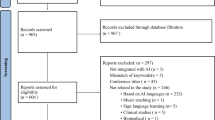
A comprehensive bibliometric and content analysis of artificial intelligence in language learning: tracing between the years 2017 and 2023

Unraveling Effects of AI Chatbots on EFL Learners’ Language Skill Development: A Meta-analysis

Neural machine translation in foreign language teaching and learning: a systematic review
Data availability.
The datasets generated during and analyzed during the current study are available from the corresponding author on reasonable request.
Abdullah Sharadgah, T., & Abdulatif Sa’di, R. (2022). A systematic review of research on the use of artificial intelligence in english language teaching and learning (2015–2021): What are the current effects? Journal of Information Technology Education: Research , 21 , 337–377. https://doi.org/10.28945/4999 .
Article Google Scholar
Agarwal, A., Durairajanayagam, D., Tatagari, S., Esteves, S., Harlev, A., Henkel, R., Roychoudhury, S., Homa, S., Puchalt, N., Ramasamy, R., Majzoub, A., Ly, K., Tvrda, E., Assidi, M., Kesari, K., Sharma, R., Banihani, S., Ko, E., Abu-Elmagd, M., & Gosalvez, J. (2016). Bibliometrics: Tracking research impact by selecting the appropriate metrics. Asian Journal of Andrology , 18 (2), 296. https://doi.org/10.4103/1008-682x.171582 .
Belda-Medina, J., & Calvo-Ferrer, J. R. (2022). Using chatbots as AI conversational partners in Language Learning. Applied Sciences , 12 (17), 8427. https://doi.org/10.3390/app12178427 .
Chen, H. L., Widarso, V., G., & Sutrisno, H. (2020). A ChatBot for Learning Chinese: Learning achievement and technology acceptance. Journal of Educational Computing Research , 58 (6), 1161–1189. https://doi.org/10.1177/0735633120929622 .
Chen, C. H., Koong, C. S., & Liao, C. (2022). Influences of integrating dynamic assessment into a speech recognition learning design to support students’ english speaking skills, learning anxiety and cognitive load. Educational Technology & Society , 25 (1), 1–14.
Google Scholar
Chen, X., Zou, D., Cheng, G., & Xie, H. (2021, July 1). Artificial intelligence-assisted personalized language learning: systematic review and co-citation analysis . IEEE Xplore. https://doi.org/10.1109/ICALT52272.2021.00079 .
Chodorow, M., Gamon, M., & Tetreault, J. (2010). The utility of article and preposition error correction systems for English language learners: Feedback and assessment. Language Testing , 27 (3), 419–436. https://doi.org/10.1177/0265532210364391 .
Chowdhary, K. R. (2020). Natural language processing. Fundamentals of Artificial Intelligence , 603–649. https://doi.org/10.1007/978-81-322-3972-7_19 .
Coughlin, J. M. (1990). Artificial intelligence and computer-assisted language learning: Present developments and future prospects. The French Review , 63 (3), 560–565. http://www.jstor.org/stable/394523 .
Delaherche, E., Chetouani, M., Mahdhaoui, A., Saint-Georges, C., Viaux, S., & Cohen, D. (2012). Interpersonal synchrony: A survey of evaluation methods across disciplines. IEEE Transactions on Affective Computing , 3 (3), 349–365. https://doi.org/10.1109/t-affc.2012.12 .
Dergaa, I., Chamari, K., Zmijewski, P., & Ben Saad, H. (2023). From human writing to artificial intelligence generated text: Examining the prospects and potential threats of ChatGPT in academic writing. Biology of Sport , 40 (2), 615–622. https://doi.org/10.5114/biolsport.2023.125623 .
Dizon, G. (2020). Evaluating intelligent personal assistants for L2 listening and speaking development. Language Learning & Technology , 24 (1), 16–26.
MathSciNet Google Scholar
Fatih, Karataş, & Yasemin Kuzgun. (2024). Faramarz Yaşar Abedi, Filiz Ozek Gunyel, Derya Karadeniz, &. Incorporating AI in foreign language education: An investigation into ChatGPT’s effect on foreign language learners. Education and Information Technologies . https://doi.org/10.1007/s10639-024-12574-6 .
Fryer, L., & Carpenter, R. (2006). Bots as language learning tools. Language Learning & Technology , 10 (3).
Fryer, L. K., Ainley, M., Thompson, A., Gibson, A., & Sherlock, Z. (2017). Stimulating and sustaining interest in a language course: An experimental comparison of Chatbot and Human task partners. Computers in Human Behavior , 75 , 461–468. https://doi.org/10.1016/j.chb.2017.05.045 .
Fryer, L. K., Nakao, K., & Thompson, A. (2019). Chatbot learning partners: Connecting learning experiences, interest and competence. Computers in Human Behavior , 93 , 279–289. https://doi.org/10.1016/j.chb.2018.12.023 .
Fryer, L. K., Coniam, D., Carpenter, R., & Lăpușneanu, D. (2020). Bots for language learning now: Current and future directions. Language Learning & Technology , 24 (2), 8–22.
Gibney, E. (2022). How to shrink AI’s ballooning carbon footprint. Nature , 607 (7920), 648–648.
Huang, W., Hew, K. F., & Fryer, L. K. (2022). Chatbots for language learning—are they really useful? A systematic review of chatbot-supported language learning. Journal of Computer Assisted Learning , 38 (1), 237–257. https://doi.org/10.1111/jcal.12610 .
Huang, X., Zou, D., Cheng, G., Chen, X., & Xie, H. (2023). Trends, research issues and applications of artificial intelligence in language education. Educational Technology & Society , 26 (1), 112–131. https://www.jstor.org/stable/48707971 .
Jaakkola, H., Henno, J., Lahti, A., Järvinen, J. P., & Mäkelä, J. (2020). Artificial intelligence and education. 43rd International Convention on Information, Communication and Electronic Technology (MIPRO) , 548–555.
Ji, H., Han, I., & Ko, Y. (2022). A systematic review of conversational AI in language education: Focusing on the collaboration with human teachers. Journal of Research on Technology in Education , 1–16. https://doi.org/10.1080/15391523.2022.2142873 .
Jia, J. (2009). CSIEC: A computer assisted English learning chatbot based on textual knowledge and reasoning. Knowledge-Based Systems , 22 (4), 249–255. https://doi.org/10.1016/j.knosys.2008.09.001 .
Johnson, W. L. (2007). Serious use of a serious game for language learning. International Journal of Artificial Intelligence in Education , 20 . https://doi.org/10.3233/JAI-2010-0006 .
Johnson, W. L., Vilhjalmsson, H., & Marsella, S. (2005). Serious games for language learning: How much game, how much AI? Artificial Intelligence in Edcation , 306–313.
Jordan, M. I., & Mitchell, T. M. (2015). Machine learning: Trends, perspectives, and prospects. Science , 349 (6245), 255–260. https://doi.org/10.1126/science.aaa8415 .
Article MathSciNet Google Scholar
Kerly, A., Ellis, R., & Bull, S. (2008). CALMsystem: A conversational agent for learner modelling. Knowledge-Based Systems , 21 (3), 238–246. https://doi.org/10.1016/j.knosys.2007.11.015 .
Kessler, G. (2018). Technology and the future of language teaching. Foreign Language Annals , 51 (1), 205–218. https://doi.org/10.1111/flan.12318 .
Kim, J., Lee, H., & Cho, Y. H. (2022). Learning design to support student-AI collaboration: Perspectives of leading teachers for AI in education. Education and Information Technologies , 27 (5). https://doi.org/10.1007/s10639-021-10831-6 .
Kirkpatrick, K. (2023). The carbon footprint of artificial intelligence. Communications of the ACM , 66 (8), 17–19. https://doi.org/10.1145/3603746 .
Kohnke, L., Moorhouse, B. L., & Zou, D. (2023). ChatGPT for language teaching and learning. RELC Journal , 003368822311628. https://doi.org/10.1177/00336882231162868 .
Hwang, G.-J., Xie, H., Wah, B., & Gašević, D. (2020). Vision, challenges, roles and research issues of Artificial Intelligence in Education. Computers and Education: Artificial Intelligence , 1 (1), 100001. https://doi.org/10.1016/j.caeai.2020.100001 .
Liang, J. C., Hwang, G. J., Chen, M. R. A., & Darmawansah, D. (2021). Roles and research foci of artificial intelligence in language education: An integrated bibliographic analysis and systematic review approach. Interactive Learning Environments , 31 (7), 1–27. https://doi.org/10.1080/10494820.2021.1958348 .
Lu, X. (2019). An empirical study on the Artificial Intelligence writing evaluation system in China CET. Big Data . https://doi.org/10.1089/big.2018.0151 .
Moral-Muñoz, J. A., Herrera-Viedma, E., Santisteban-Espejo, A., & Cobo, M. J. (2020). Software tools for conducting bibliometric analysis in science: An up-to-date review. El Profesional De La Información , 29 (1). https://doi.org/10.3145/epi.2020.ene.03 .
Perkins, M. (2023). Academic integrity considerations of AI large Language models in the post-pandemic era: ChatGPT and beyond. Journal of University Teaching and Learning Practice , 20 (2). https://doi.org/10.53761/1.20.02.07 .
Pokrivcakova, S. (2019). Preparing teachers for the application of AI-powered technologies in foreign language education. Journal of Language and Cultural Education , 7 (3), 135–153. https://doi.org/10.2478/jolace-2019-0025 .
Ruan, S., Jiang, L., Xu, J., Tham, B. J. K., Qiu, Z., Zhu, Y., Murnane, E. L., Brunskill, E., & Landay, J. A. (2019). QuizBot. Proceedings of the 2019 CHI Conference on Human Factors in Computing Systems . https://doi.org/10.1145/3290605.3300587 .
Salmon, P. M., Baber, C., Burns, C., Carden, T., Cooke, N. J., Cummings, M., Hancock, P., McLean, S., Gemma, J. M., Read, & Stanton, N. A. (2023). Managing the risks of artificial general intelligence: A human factors and ergonomics perspective. The 5 Th MLSys Conference . https://doi.org/10.1002/hfm.20996 .
Settles, B., & Meeder, B. (2016). A trainable spaced repetition model for language learning. Proceedings of the 54th Annual Meeting of the Association for Computational Linguistics (Volume 1: Long Papers) , 1 . https://doi.org/10.18653/v1/p16-1174 .
Sindermann, C., Sha, P., Zhou, M., Wernicke, J., SchmittH. S., Li, M., Sariyska, R., Stavrou, M., Becker, B., & Montag, C. (2020). Assessing the attitude towards Artificial Intelligence: Introduction of a short measure in German, Chinese, and English Language. KI - Künstliche Intelligenz , 35 . https://doi.org/10.1007/s13218-020-00689-0 .
Smutny, P., & Schreiberova, P. (2020). Chatbots for learning: A review of educational chatbots for the Facebook Messenger. Computers & Education , 151 (103862), 103862. https://doi.org/10.1016/j.compedu.2020.103862 .
Sun, Z., Anbarasan, M., & Praveen Kumar, D. (2020). Design of online intelligent English teaching platform based on artificial intelligence techniques. Computational Intelligence . https://doi.org/10.1111/coin.12351 .
Tai, T. Y., & Chen, H. H. J. (2020). The impact of Google Assistant on adolescent EFL learners’ willingness to communicate. Interactive Learning Environments , 1–18. https://doi.org/10.1080/10494820.2020.1841801 .
Troussas, C., Virvou, M., & Alepis, E. (2013). Comulang: Towards a collaborative e-learning system that supports student group modeling. SpringerPlus , 2 (1). https://doi.org/10.1186/2193-1801-2-387 .
Weizenbaum, J. (1966). ELIZA—a computer program for the study of natural language communication between man and machine. Communications of the ACM , 9 (1), 36–45. https://doi.org/10.1145/365153.365168 .
Yan, D. (2023). Impact of ChatGPT on learners in a L2 writing practicum: An exploratory investigation. Education and Information Technologies . https://doi.org/10.1007/s10639-023-11742-4 .
Yang, S. J. H., Ogata, H., Matsui, T., & Chen, N.-S. (2021). Human-centered artificial intelligence in education: Seeing the invisible through the visible. Computers and Education: Artificial Intelligence , 2 , 100008. https://doi.org/10.1016/j.caeai.2021.100008 .
Yang, H., & Kyun, S. (2022). The current research trend of artificial intelligence in language learning: A systematic empirical literature review from an activity theory perspective. Australasian Journal of Educational Technology , 38 (5), 180–210. https://doi.org/10.14742/ajet.7492 .
Yang, H., Kim, H., Lee, J. H., & Shin, D. (2022). Implementation of an AI chatbot as an English conversation partner in EFL speaking classes. ReCALL , 1–17. https://doi.org/10.1017/s0958344022000039 .
Yang, H., Gao, C., & Shen, H. (2023). Learner interaction with, and response to, AI-programmed automated writing evaluation feedback in EFL writing: An exploratory study. Education and Information Technologies . https://doi.org/10.1007/s10639-023-11991-3 .
Download references
This research received no specific grant from any funding agency in the public, commercial, or not-for-profit sectors.
Author information
Han Weijing
Present address: Yunnan Technology and Business University, Kunming, 650000, Yunnan, China
Authors and Affiliations
College of Arts and Sciences · Kunming, Kunming, 650000, Yunnan, China
Fakulti Pengajian Pendidikan, UPM, Universiti Putra Malaysia, Seri Kembangan, 43400, Selangor, Malaysia
Ma Huiling, Lilliati Ismail & Han Weijing
You can also search for this author in PubMed Google Scholar
Corresponding author
Correspondence to Ma Huiling .
Ethics declarations
Competing interest.
The author declare that they have no conflict interest.
Additional information
Publisher’s note.
Springer Nature remains neutral with regard to jurisdictional claims in published maps and institutional affiliations.
Rights and permissions
Springer Nature or its licensor (e.g. a society or other partner) holds exclusive rights to this article under a publishing agreement with the author(s) or other rightsholder(s); author self-archiving of the accepted manuscript version of this article is solely governed by the terms of such publishing agreement and applicable law.
Reprints and permissions
About this article
Ma, H., Ismail, L. & Han, W. A bibliometric analysis of artificial intelligence in language teaching and learning (1990–2023): evolution, trends and future directions. Educ Inf Technol (2024). https://doi.org/10.1007/s10639-024-12848-z
Download citation
Received : 02 February 2024
Accepted : 05 June 2024
Published : 22 June 2024
DOI : https://doi.org/10.1007/s10639-024-12848-z
Share this article
Anyone you share the following link with will be able to read this content:
Sorry, a shareable link is not currently available for this article.
Provided by the Springer Nature SharedIt content-sharing initiative
- Artificial intelligence
- Language learning
- Language teaching
- Bibliometric analysis
- Find a journal
- Publish with us
- Track your research
By continuing to browse the site you are agreeing to our use of cookies and similar tracking technologies described in our privacy policy .
Voice of the Discipline
News and publications.
Access AHA news and publications supporting the work of historians.
Stay up-to-date with the AHA

June 24, 2024
Action Alert Opposing Ohio SB 83
The AHA has shared the following action alert with our Ohio members. SB 83 is being considered by the Ohio…

June 21, 2024
AHA Signs On to CIE Letter Urging HEA-Title VI Funding for FY 2025

June 18, 2024
Welcome to the AHA’s New Website
May 30, 2024
AHA Signs on to ACLS Statement on 2024 Campus Protests
The American Historical Review is the flagship journal of the AHA and the journal of record for the historical discipline in the United States, bringing together scholarship from every major field of historical study.
Perspectives on History is the newsmagazine of the AHA and is the principal source for news and information about the discipline of history. Since 1962, Perspectives has promoted our work by publishing articles and commentary on all aspects of the historical discipline.
History in Focus Podcast
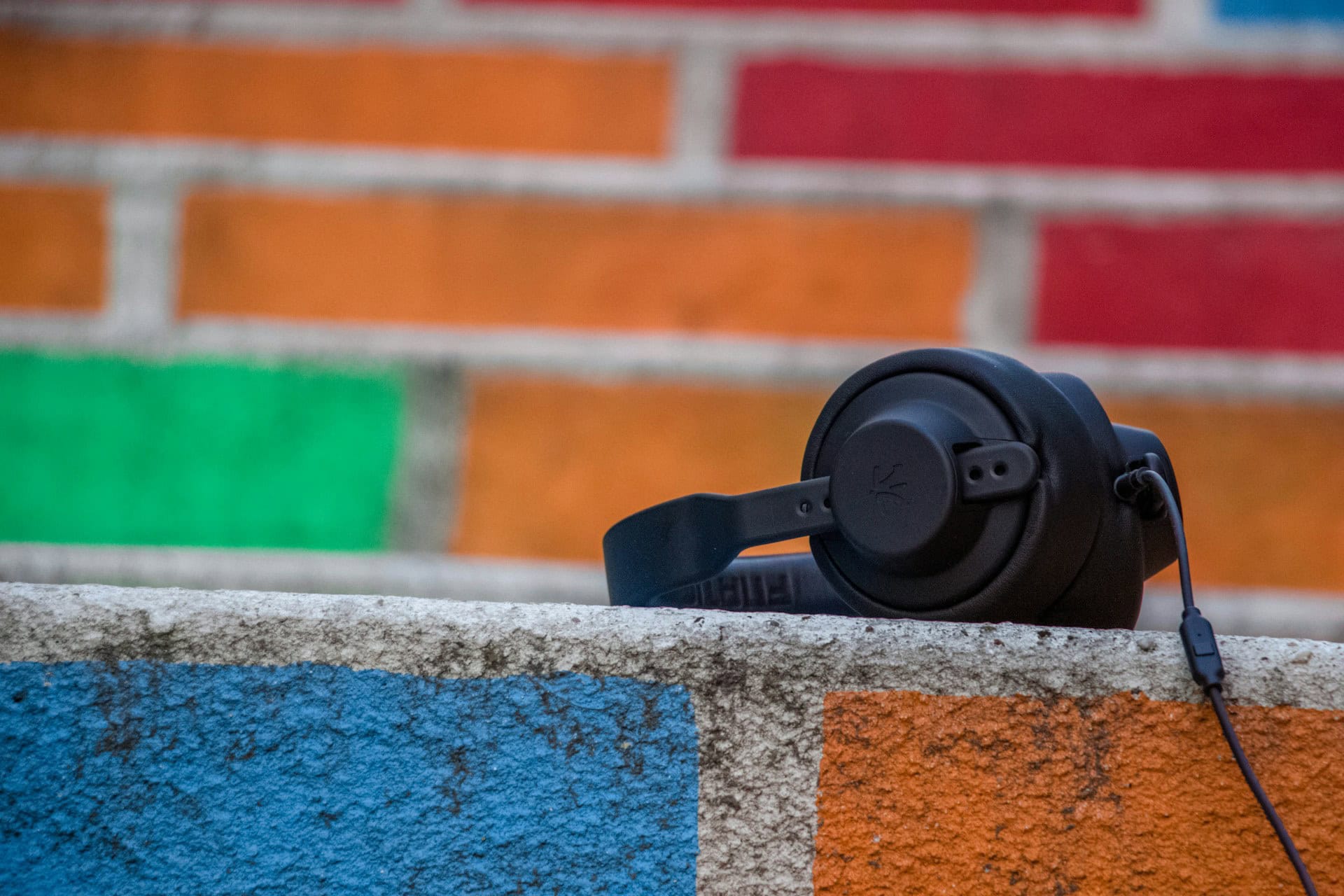
Environmental Crisis and Recovery
Collaborative history + revisiting marion thompson wright, teaching historiography + chilling affects, aha booklets.
The AHA publishes booklets that address a diversity of topics to serve the needs of history students and historians in all professions. Our publications include career advice for history graduates, overviews and syntheses of current historical topics and fields, and guides to teaching and learning in history.
For the Press
The AHA is pleased to provide resources for journalists and press. If you are a member of the media and would like to submit a request for a referral or interview, please email [email protected] . Please provide any pertinent deadlines and we will do our best to accommodate your request. The AHA can find you a historian for any topic, and assists with dozens of inquiries each year.
The AHA encourages the reading of history with periodic reading challenges.
Permission to Use AHA Copyrighted Material
All material published by the American Historical Association in any medium is protected by copyright.
Join the AHA
The AHA brings together historians from all specializations and all work contexts, embracing the breadth and variety of activity in history today.

IMAGES
VIDEO
COMMENTS
Reading Time: 14 minutes In this article I will show you how to write a research paper using the four LEAP writing steps. The LEAP academic writing approach is a step-by-step method for turning research results into a published paper.. The LEAP writing approach has been the cornerstone of the 70 + research papers that I have authored and the 3700+ citations these paper have accumulated within ...
Overall, while writing an article from scratch may appear a daunting task for many young researchers, the process can be largely facilitated by good groundwork when preparing your research project, and a systematic approach to the writing, following these simple guidelines for each section (see summary in Fig. 1). It is worth the effort of ...
Research paper: Research article: A research paper is an extended form of writing that presents and supports an argument on a particular topic. It provides evidence for the opinion or idea in the form of facts, data, analysis, opinions from authorities in specific fields etc. The objective is to make original claims based on careful evaluation ...
Create a research paper outline. Write a first draft of the research paper. Write the introduction. Write a compelling body of text. Write the conclusion. The second draft. The revision process. Research paper checklist. Free lecture slides.
Writing research papers does not come naturally to most of us. The typical research paper is a highly codified rhetorical form [1,2]. Knowledge of the rule ... Writing a research article: advice to beginners, International Journal for Quality in Health Care, Volume 16, Issue 3, June 2004, Pages 191-192, ...
This article aims to provide an overview of the form, structure, and reporting standards for different types of papers, with a focus on writing for publication in peer-reviewed journals. It will also provide a summary of the different considerations to be made by authors selecting the right journals in which to publish their research, and offer ...
Step 1: Introduce your topic. Step 2: Describe the background. Step 3: Establish your research problem. Step 4: Specify your objective (s) Step 5: Map out your paper. Research paper introduction examples. Frequently asked questions about the research paper introduction.
Delivered to your inbox every two weeks, the Writing Toolbox features practical advice and tools you can use to prepare a research manuscript for submission success and build your scientific writing skillset. Discover how to navigate the peer review and publishing process, beyond writing your article.
Checklist: Writing a Great Research Paper. Published on October 16, 2022 by Shona McCombes.Revised on November 29, 2022. A research paper is an extended piece of writing based on in-depth independent research. It may involve conducting empirical research or analyzing primary and secondary sources.. Writing a good research paper requires you to demonstrate a strong knowledge of your topic and ...
Definition: Research Paper is a written document that presents the author's original research, analysis, and interpretation of a specific topic or issue. It is typically based on Empirical Evidence, and may involve qualitative or quantitative research methods, or a combination of both. The purpose of a research paper is to contribute new ...
Writing a Research Paper. This page lists some of the stages involved in writing a library-based research paper. Although this list suggests that there is a simple, linear process to writing such a paper, the actual process of writing a research paper is often a messy and recursive one, so please use this outline as a flexible guide.
The pages in this section cover the following topic areas related to the process of writing a research paper: Genre - This section will provide an overview for understanding the difference between an analytical and argumentative research paper. Choosing a Topic - This section will guide the student through the process of choosing topics ...
Communicating research findings is an essential step in the research process. Often, peer-reviewed journals are the forum for such communication, yet many researchers are never taught how to write a publishable scientific paper. In this article, we explain the basic structure of a scientific paper and describe the information that should be included in each section. We also identify common ...
The objective of this article is to provide prospective authors with the tools needed to write original research articles of high quality that have a good chance of being published. ... revising drafts of the manuscript will be the most time-consuming task involved in writing a paper. By regularly checking in with coauthors and colleagues ...
The next stage is to start writing! "Writing for research" is the second stage of your research journey. Learn the fundamentals of manuscript preparation and how to write them, including how to structure your article and write a great abstract. Complete the topics within "Writing for research" and increase your chances of getting published.
What follows is a step-by-step guide on how you can make your research paper a good read and improve the chances of your paper's acceptance: CONTENTS. 1. How to dive into the process of writing. Outline of a research paper. Keep sub-topics and references ready. 2. Getting the title of your research paper right. 3.
State why the problem you address is important. State what is lacking in the current knowledge. State the objectives of your study or the research question. Methods. Describe the context and setting of the study. Specify the study design. Describe the 'population' (patients, doctors, hospitals, etc.) Describe the sampling strategy.
The two main types are research papers and articles, which have distinct features separating them from one another. Research paper: A scholarly work typically required for completion of an undergraduate or graduate degree. Research article: A document containing original findings in a given field. The primary difference between these two ...
Set the top, bottom, and side margins of your paper at 1 inch. Use double-spaced text throughout your paper. Use a standard font, such as Times New Roman or Arial, in a legible size (10- to 12-point). Use continuous pagination throughout the paper, including the title page and the references section.
Writing a Research Article can be an unbelievably daunting task, but it is a vital skill for any researcher or academic. This blog post intends to provide a detailed instruction on how to create a Research Paper. It will delve into the crucial elements of a Research Article, including its format, various types, and how it differs from a Research Paper.
Registered report. A Registered Report consists of two different kinds of articles: a study protocol and an original research article. This is because the review process for Registered Reports is divided into two stages. In Stage 1, reviewers assess study protocols before data is collected.
the success in publishing scientific papers. This article reviews the guidelines for writing and submitting research papers. The three most important success criteria in publishing are as follows: the paper describes a good research, it is written according to the traditions of scientific writing and submitted to the right journal. The "right"
He's drawn on that experience and his review of the scientific literature to identify eight features of satisfying writing: simplicity, specificity, surprise, stirring language, seductiveness ...
In this article, we will guide you through the process of writing an effective cover letter and explain how you can get it right every time with examples. First, let us get started with the basics! Getting the Basics Right When writing a cover letter, it is crucial to address the editor by their correct and complete name¹. If there are ...
To get high scores at essay writing tests, learners of English as a foreign language need to focus on good arguments more than on complex grammar. The finding challenges conventional approaches to ...
Editor's Note: This story is the first in an occasional series on research projects currently in the works at the Law School. Every court case and judicial proceeding generates an enormous amount of data, some of which is either non-public or difficult to access. What to do with that data is a question that Aziz Z. Huq, the Frank and Bernice J. Greenberg Professor at the Law School has been ...
The current study first employed bibliometric analysis, which takes academic paper as the object, and provides the macroscopic structure of the research field through the comprehensive use of statistical and mathematical methods (Agarwal et al., 2016).Subsequently, a complementary systematic review was conducted to analyze the most representative studies as a complement.
How diverse is the primary national curriculum for history? Writing about history education at secondary level, Mohamud and Whitburn (Citation 2016) claim that the school curriculum encourages teachers to focus on the history of the elite, which lacks diverse representation in British history because those from the elite in Britain's past rarely identified with an ethnic minority background.
Stay up-to-date with the AHA View All News The American Historical Review is the flagship journal of the AHA and the journal of record for the historical discipline in the United States, bringing together scholarship from every major field of historical study. Learn More Perspectives on History is the newsmagazine…